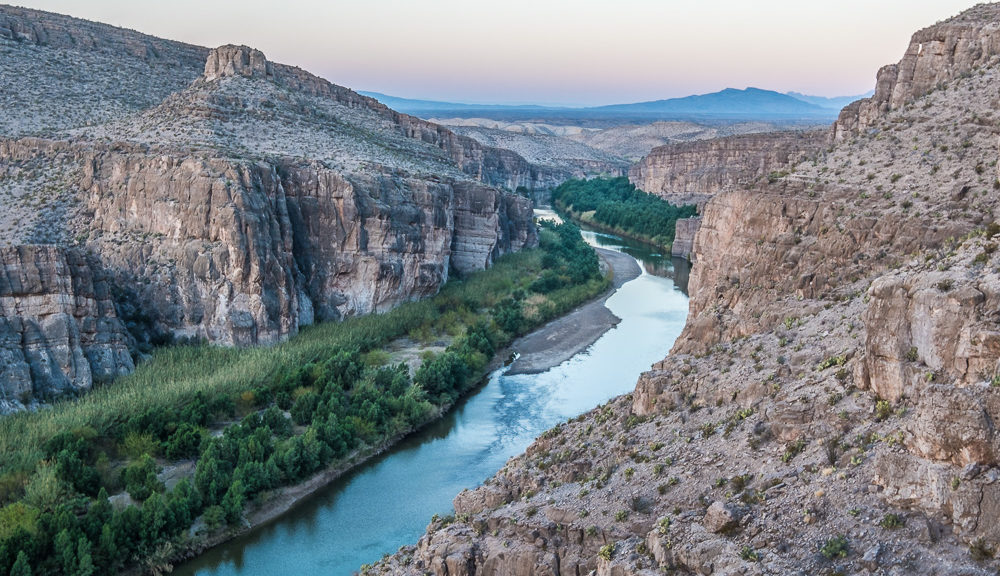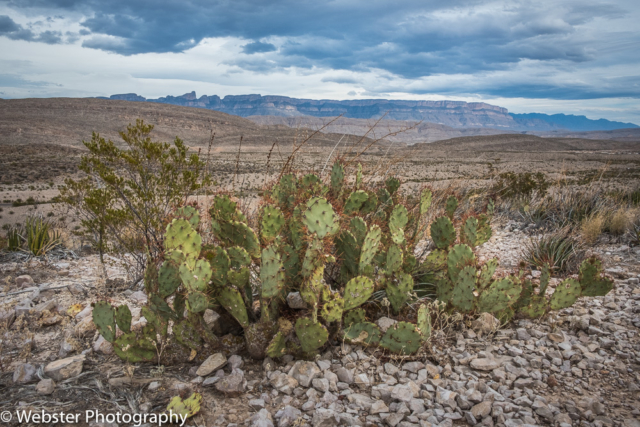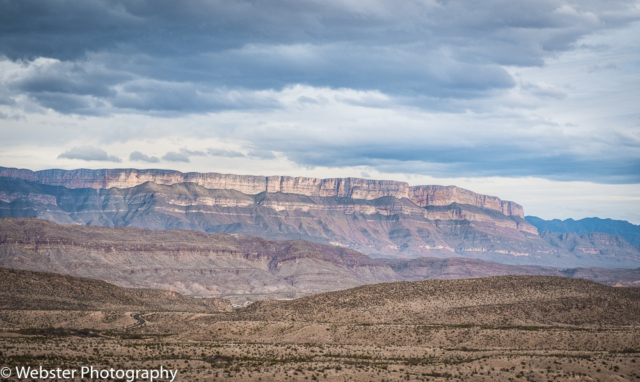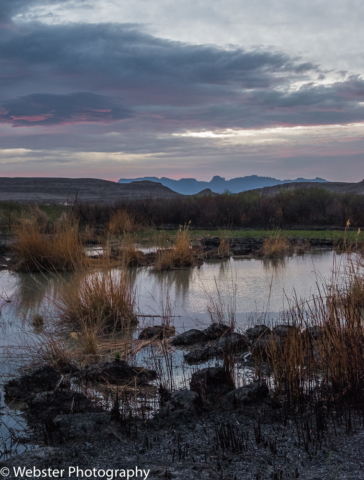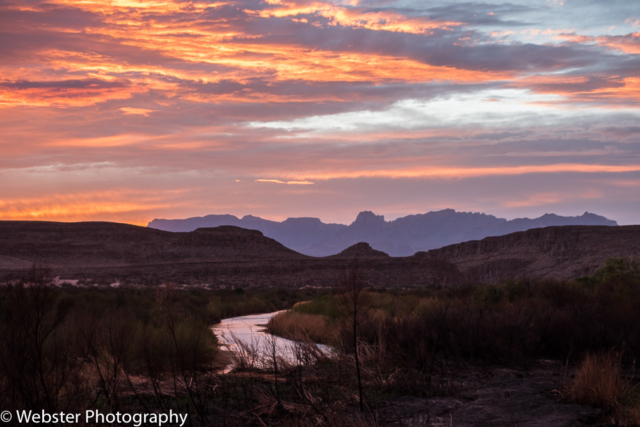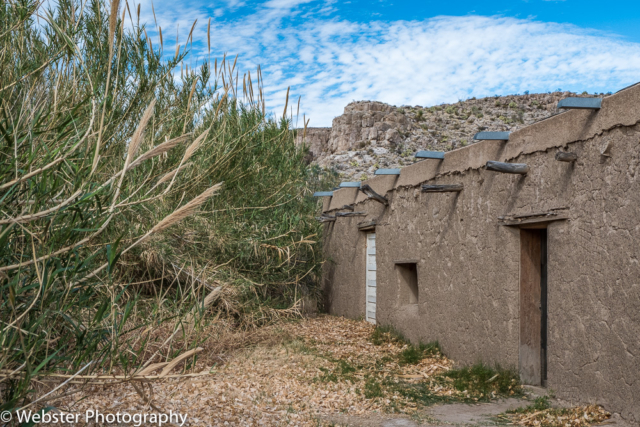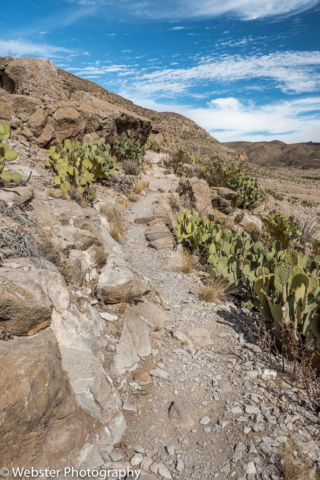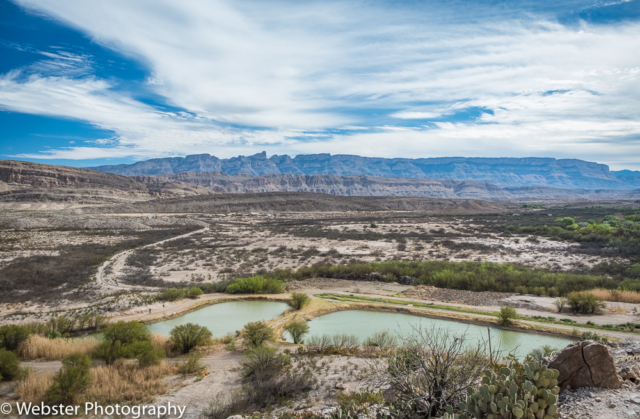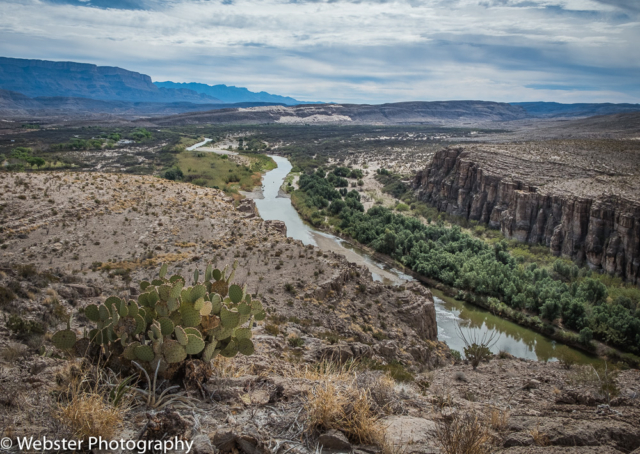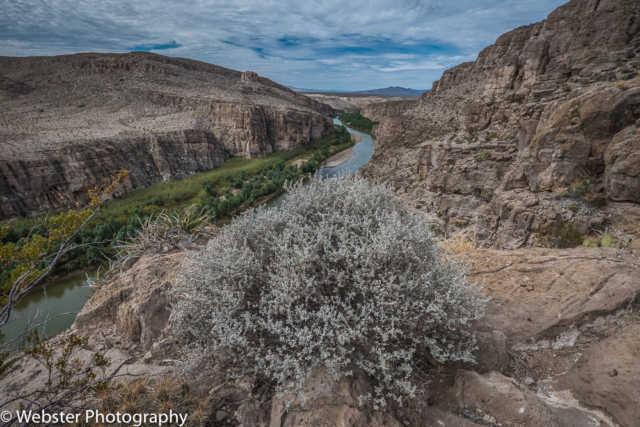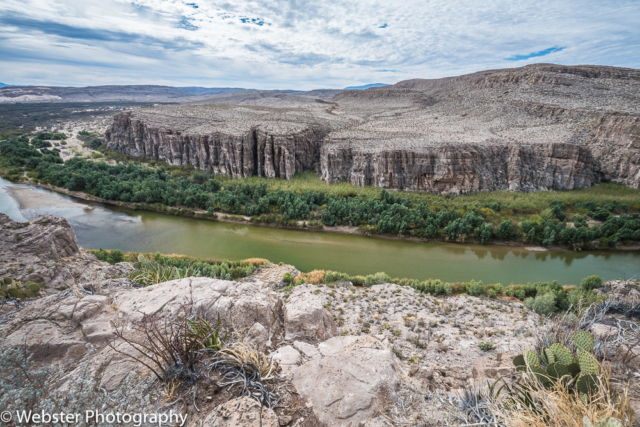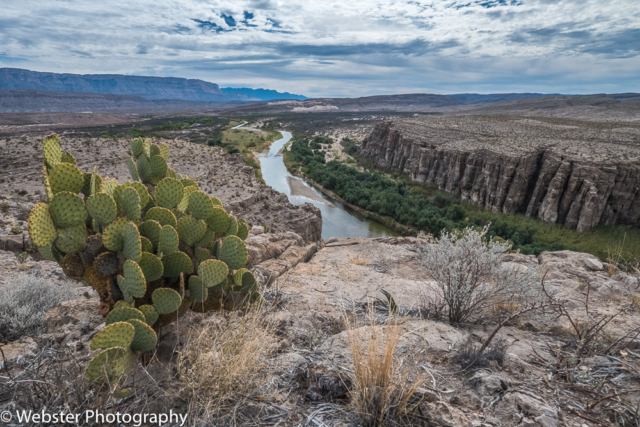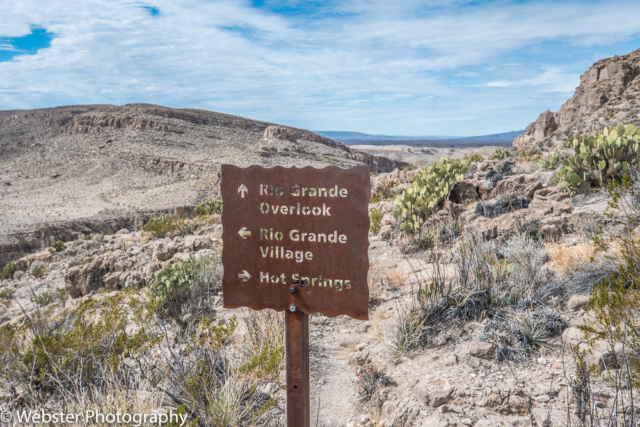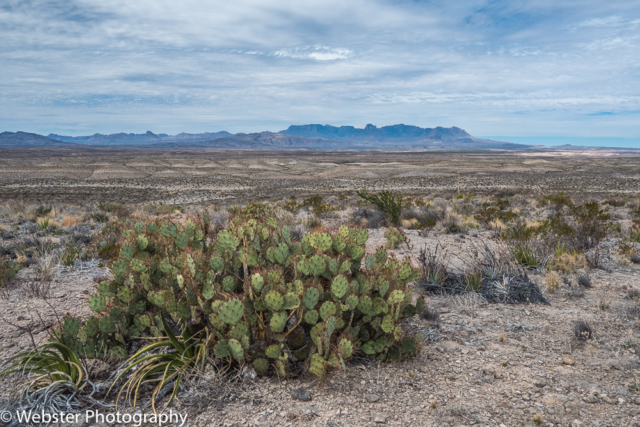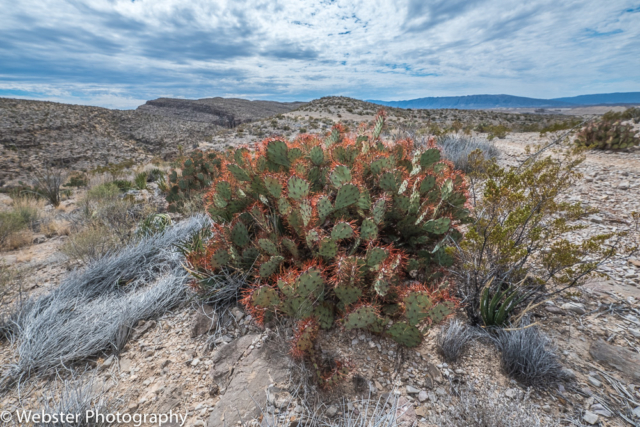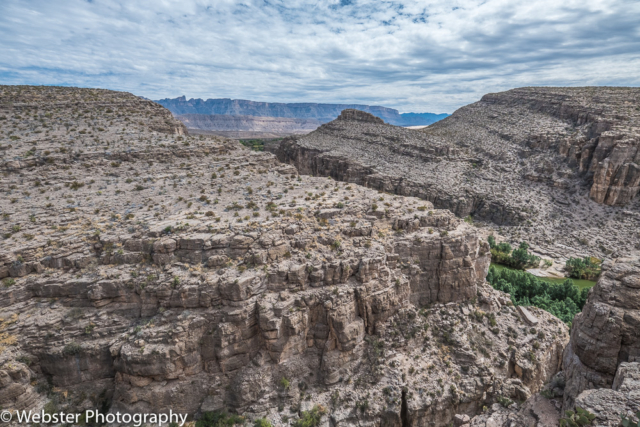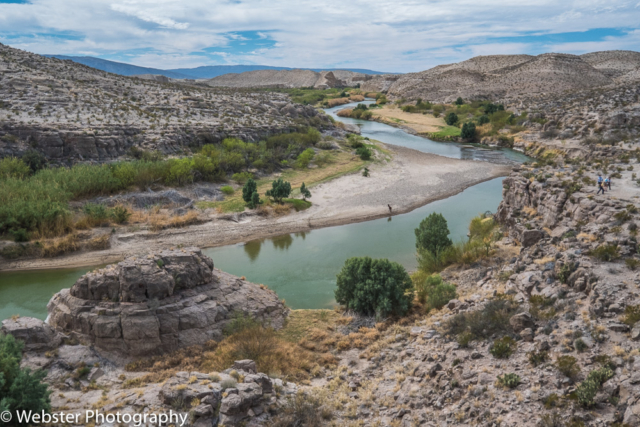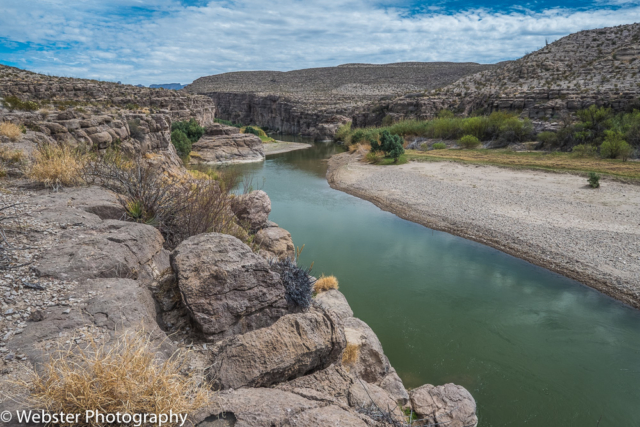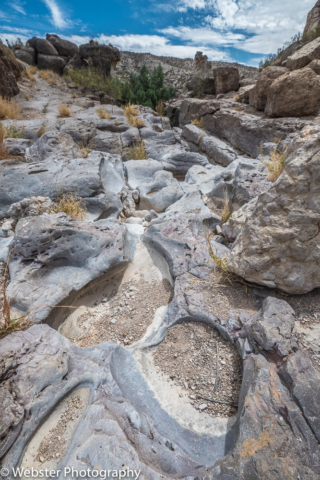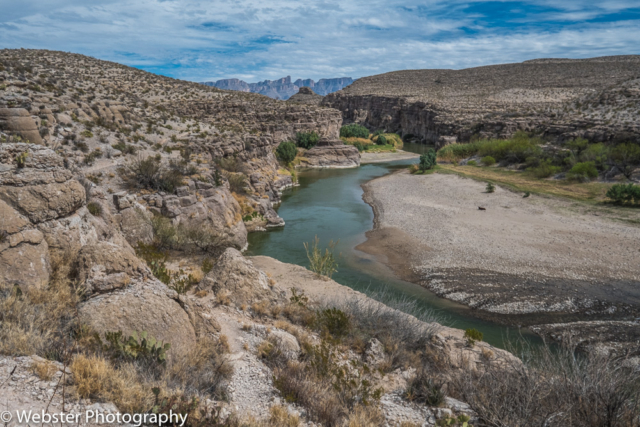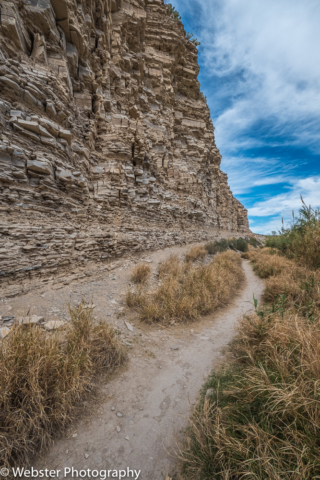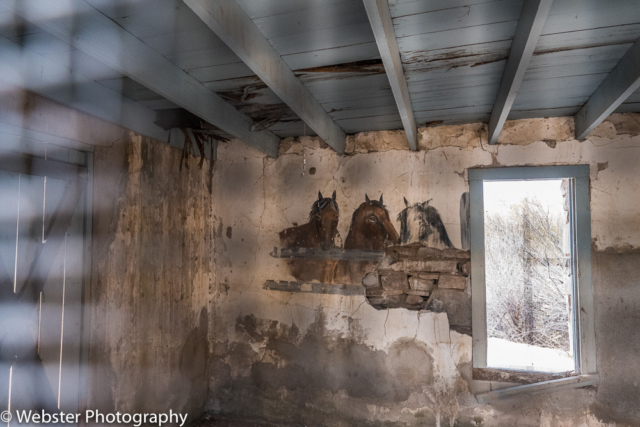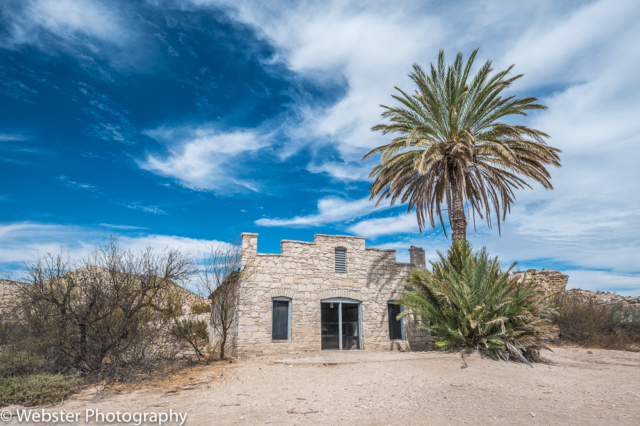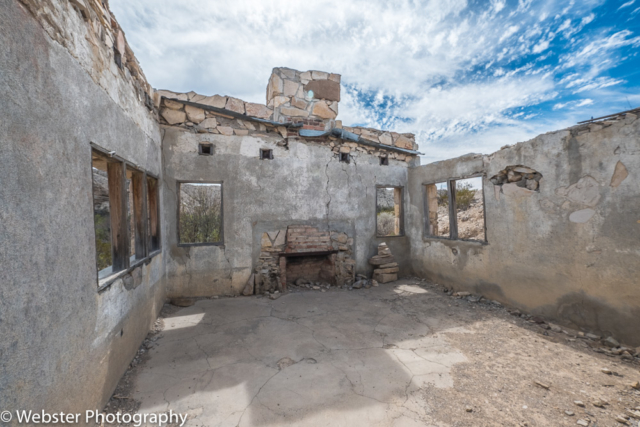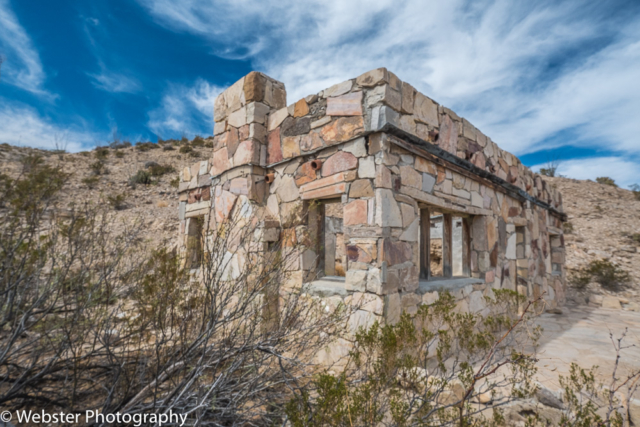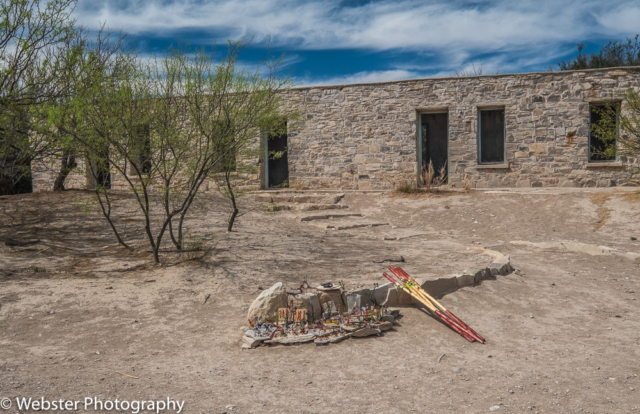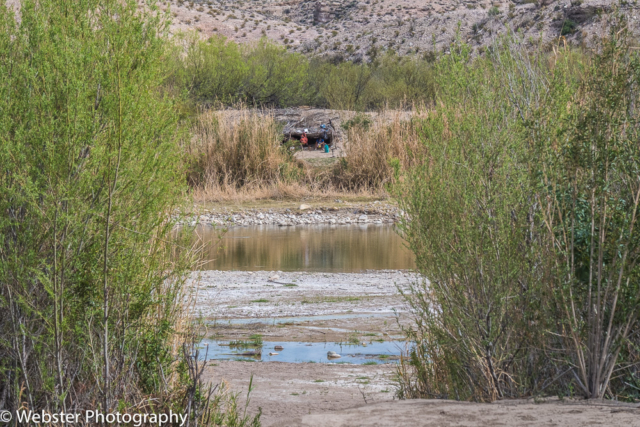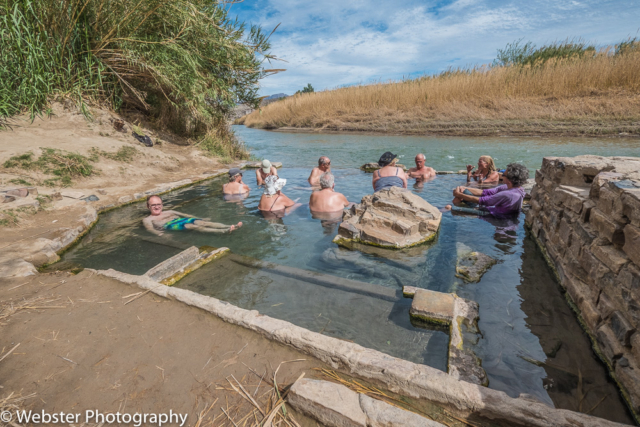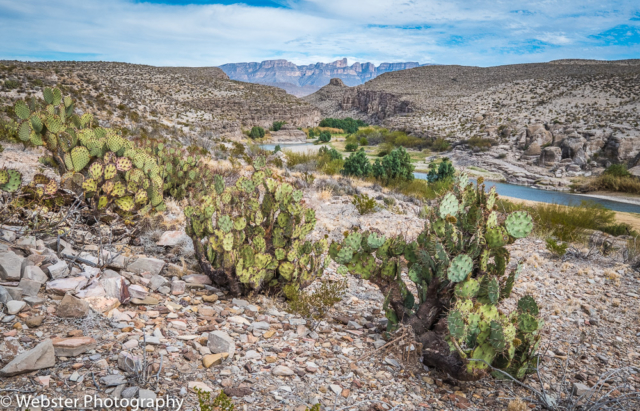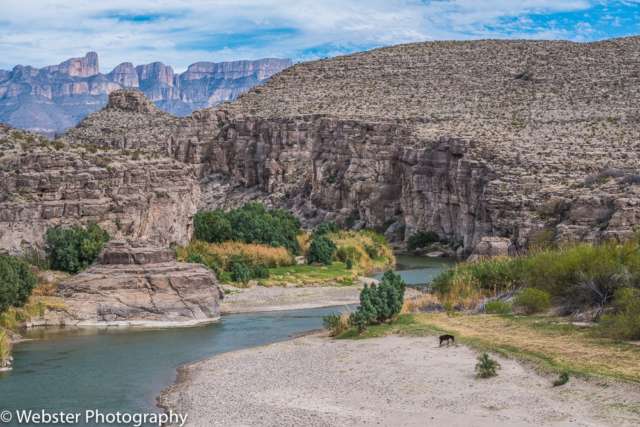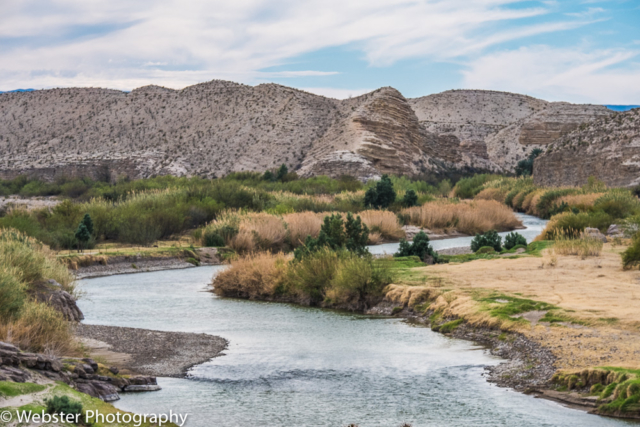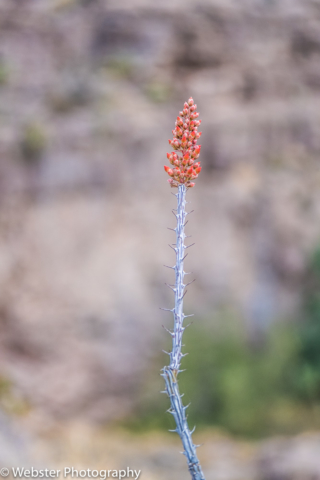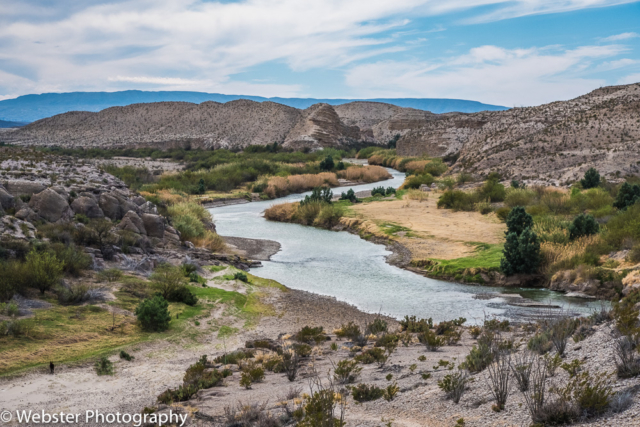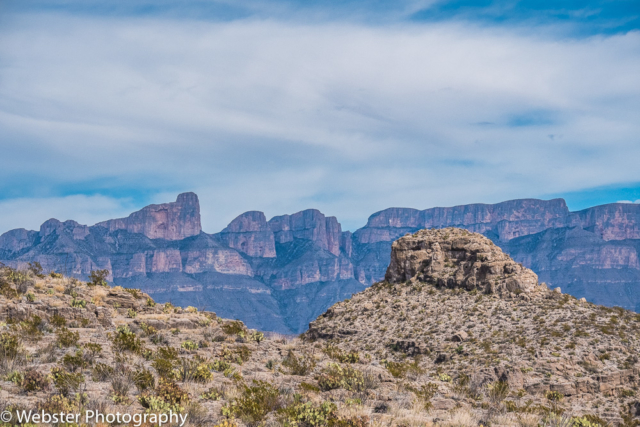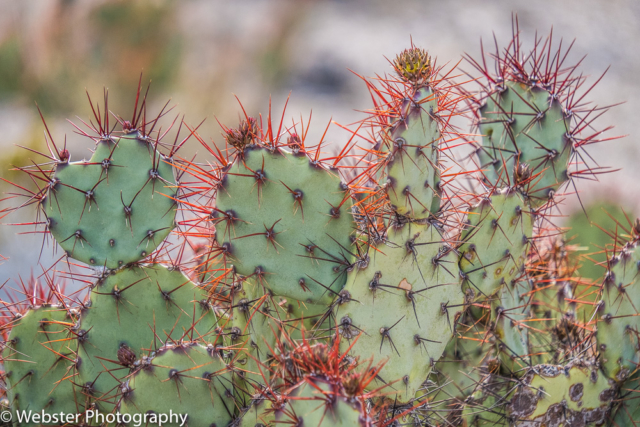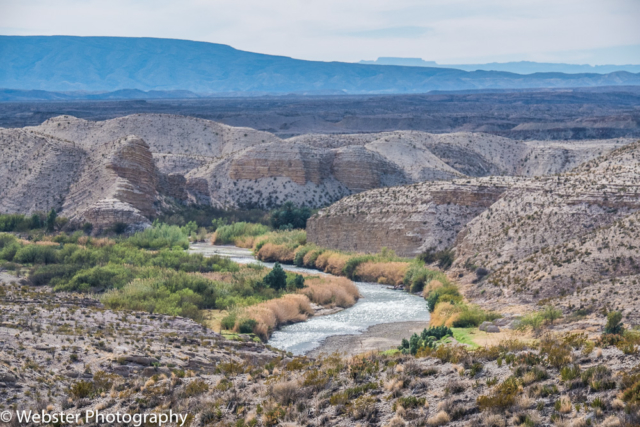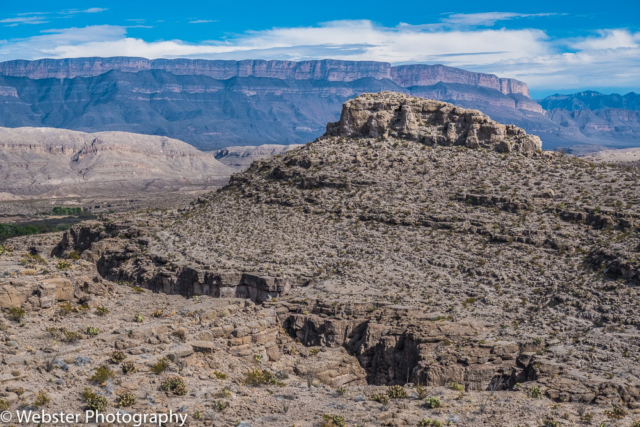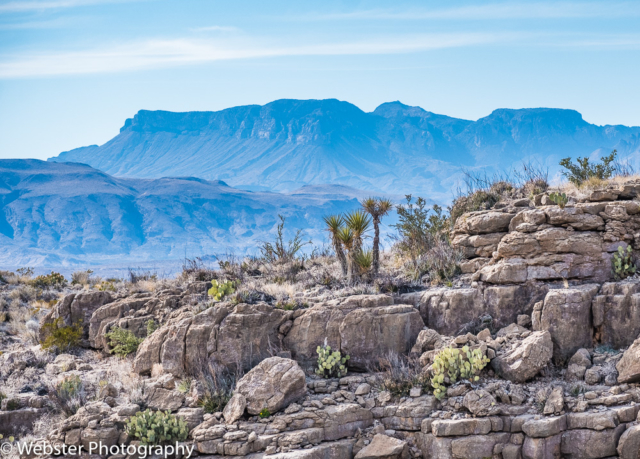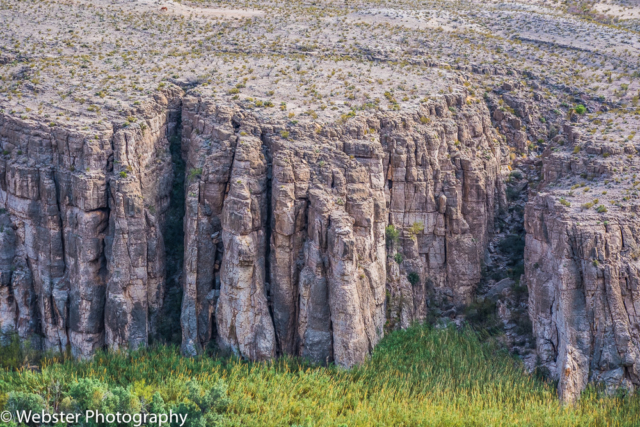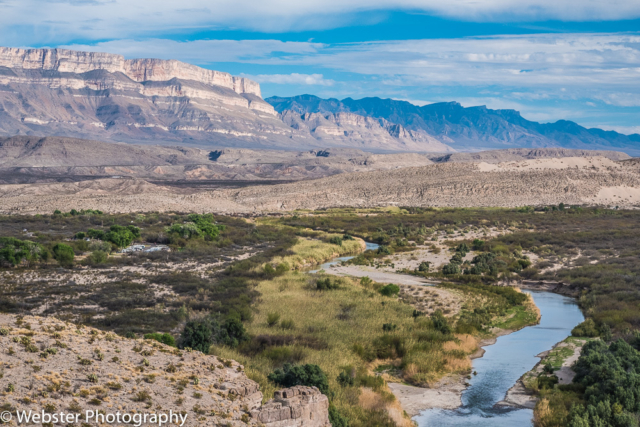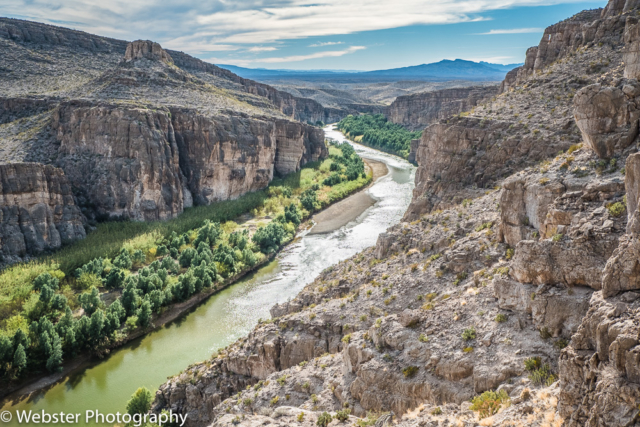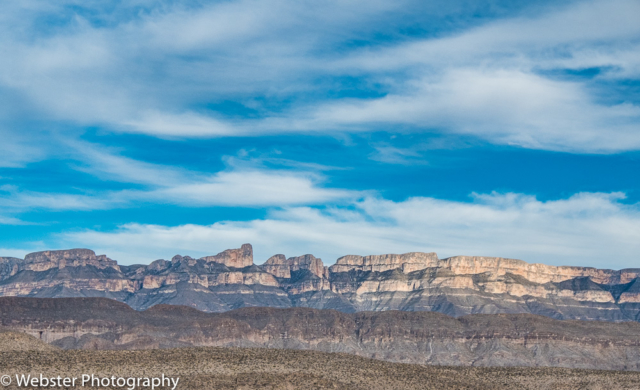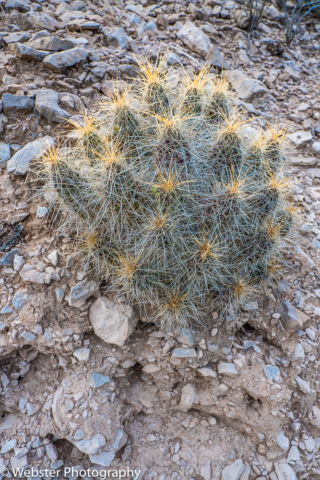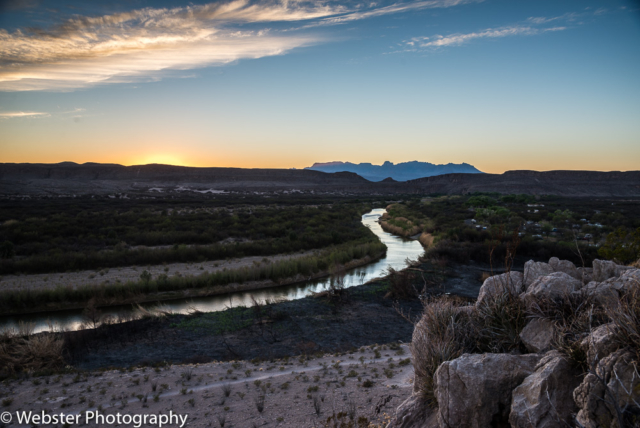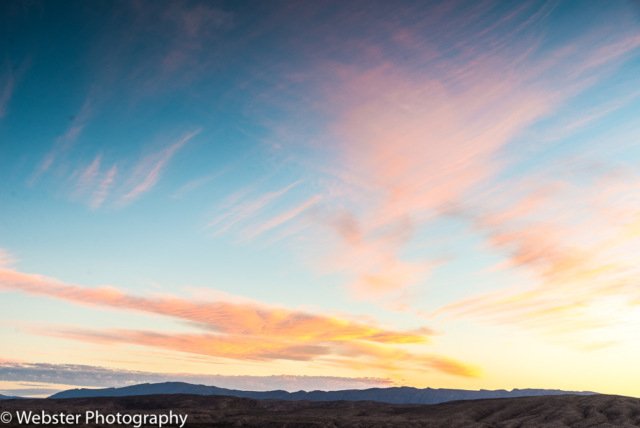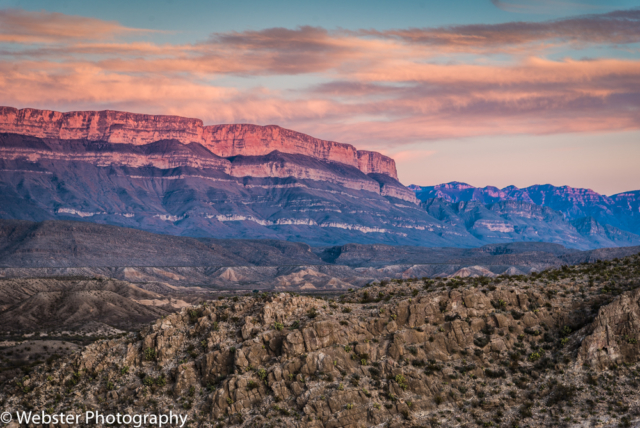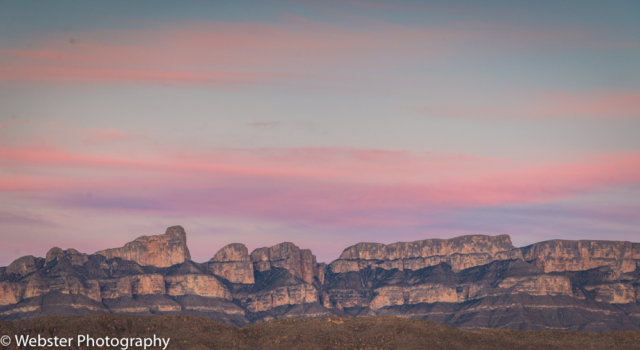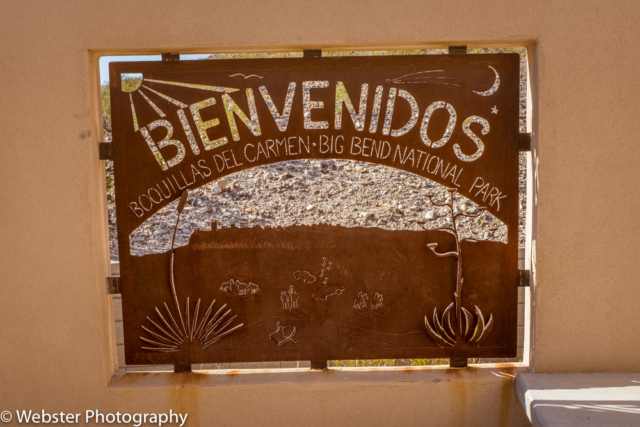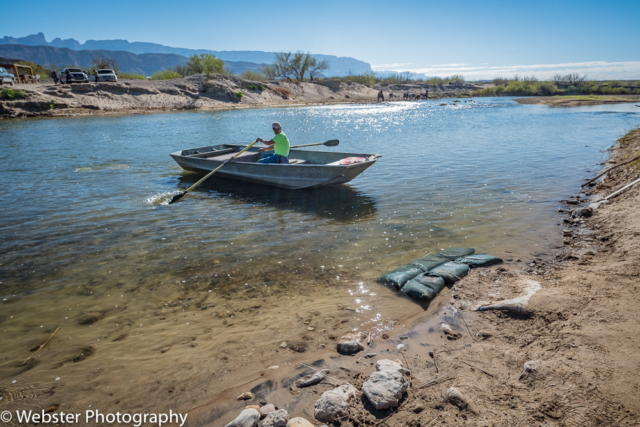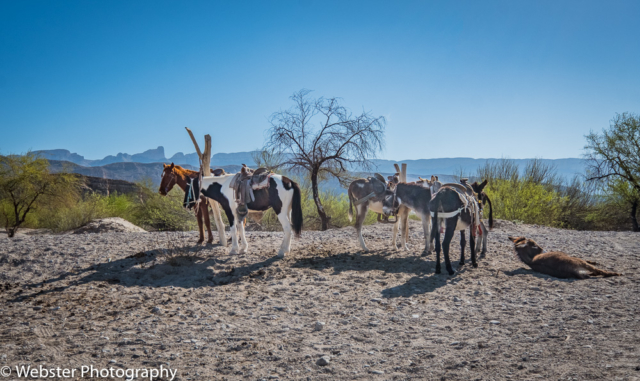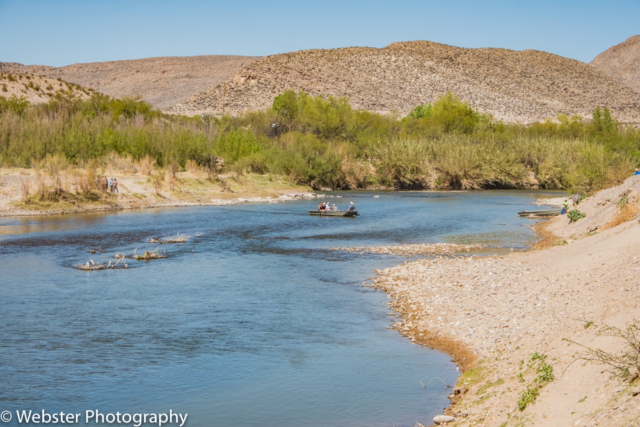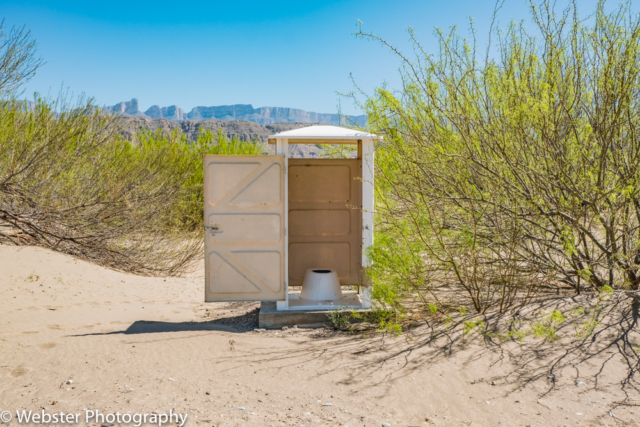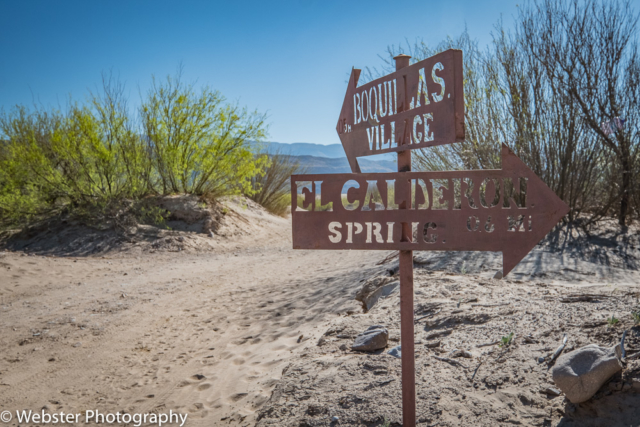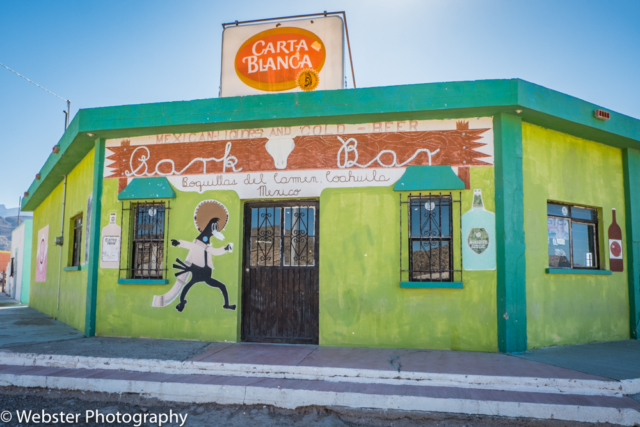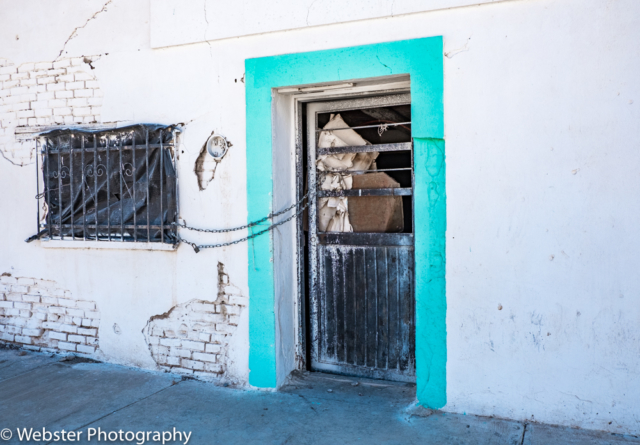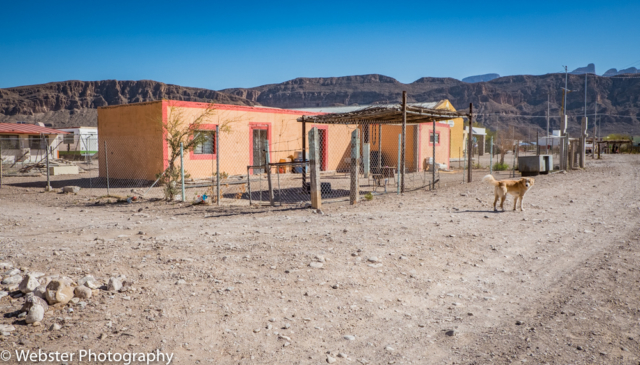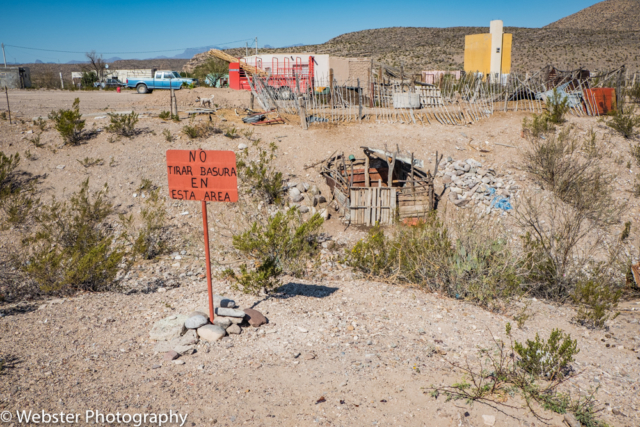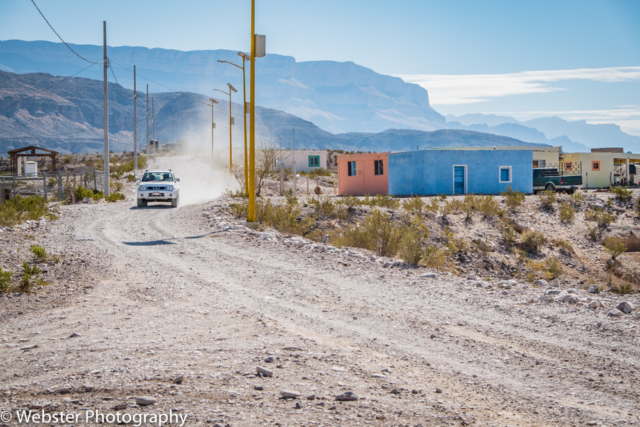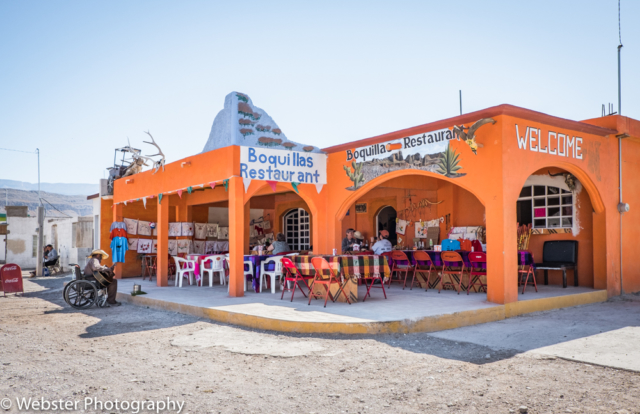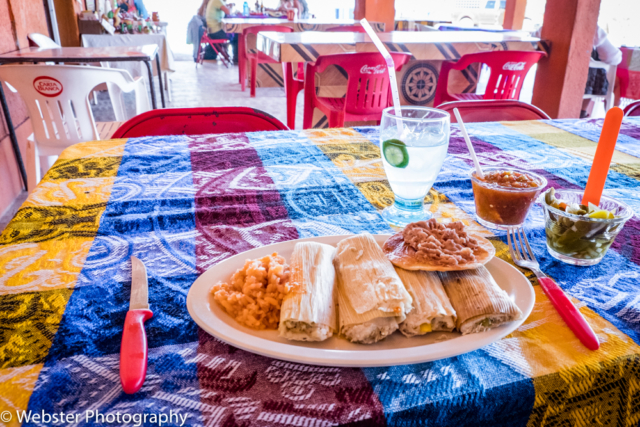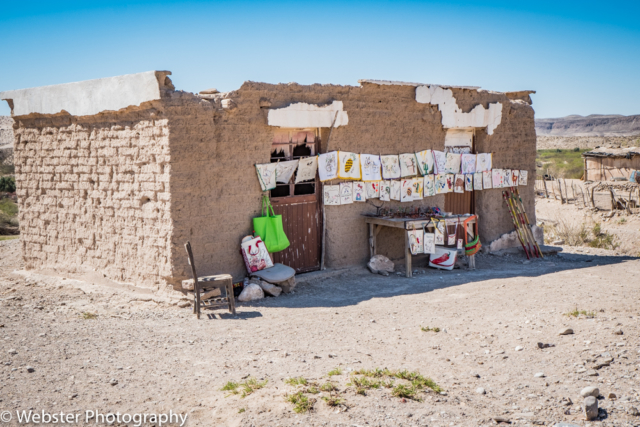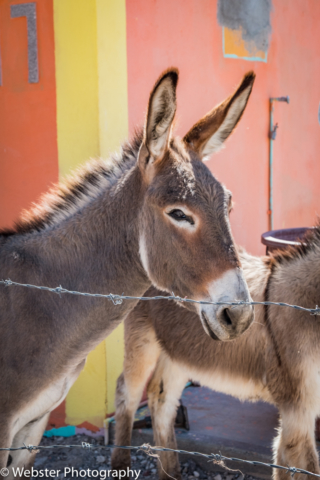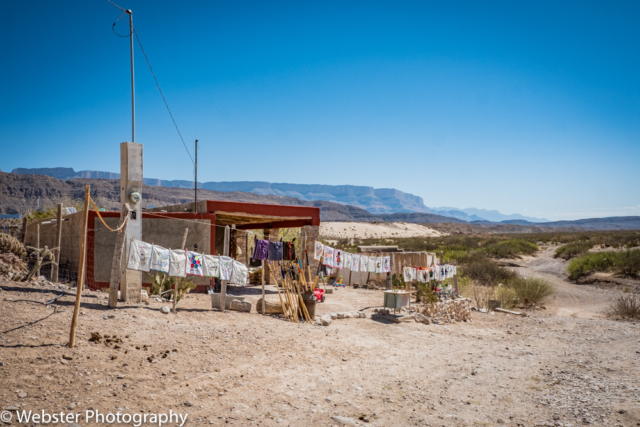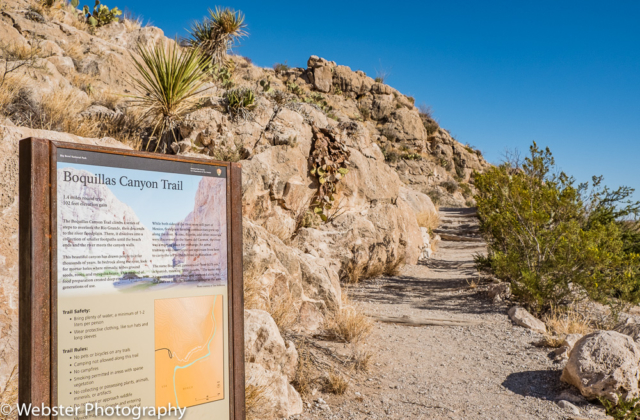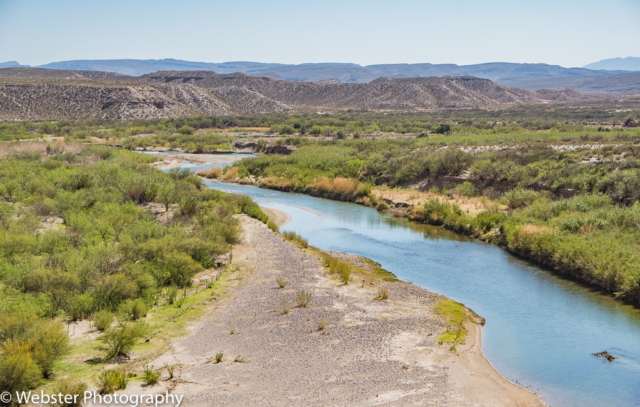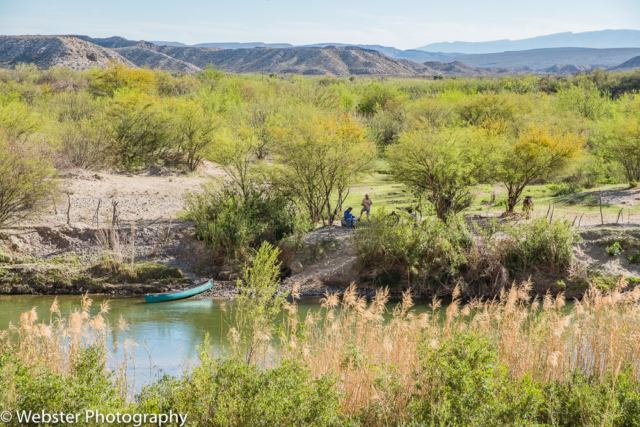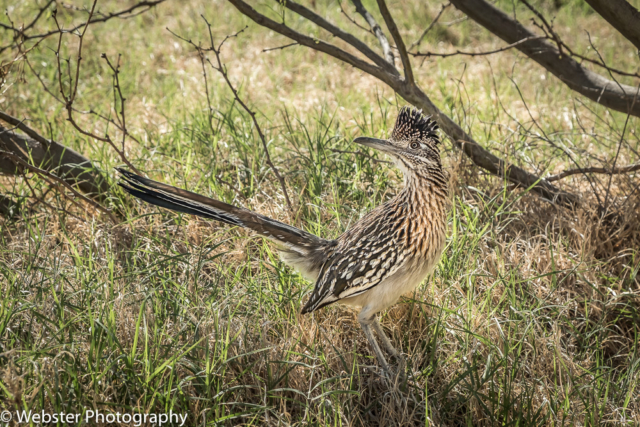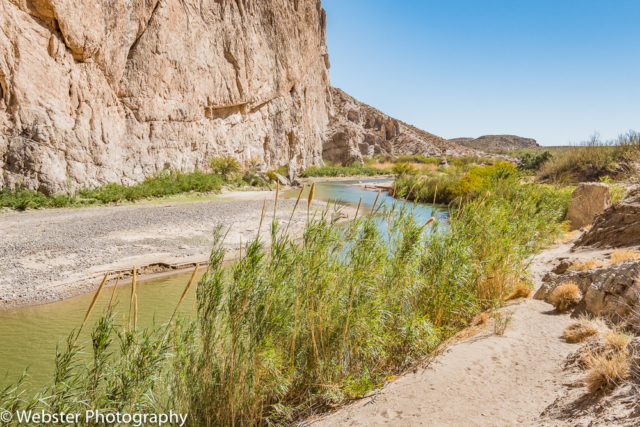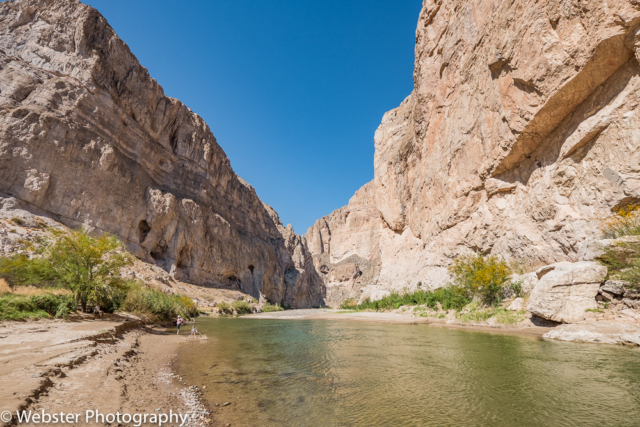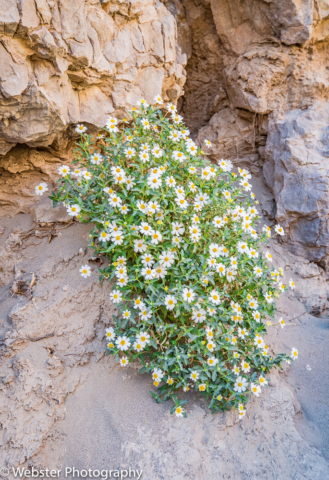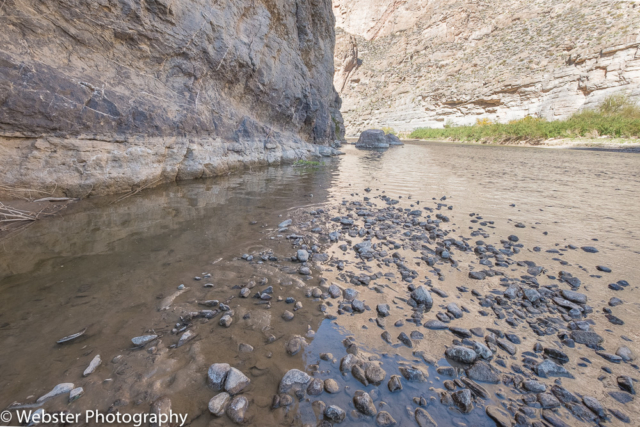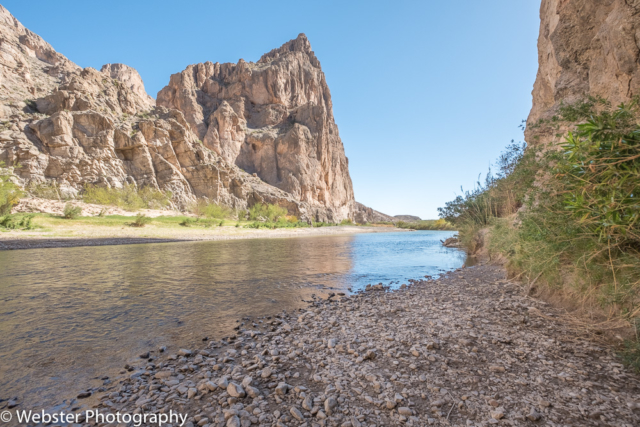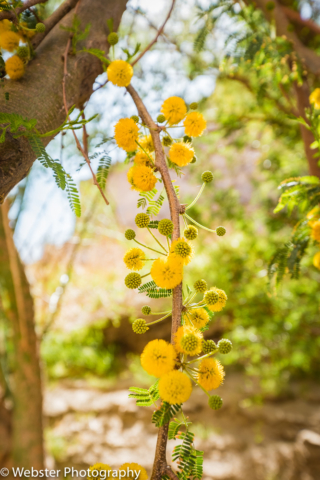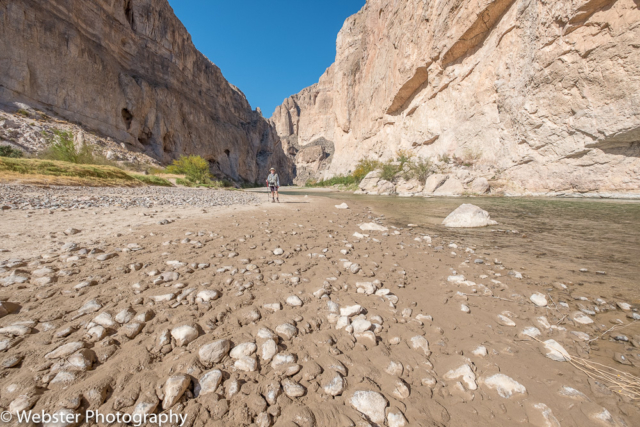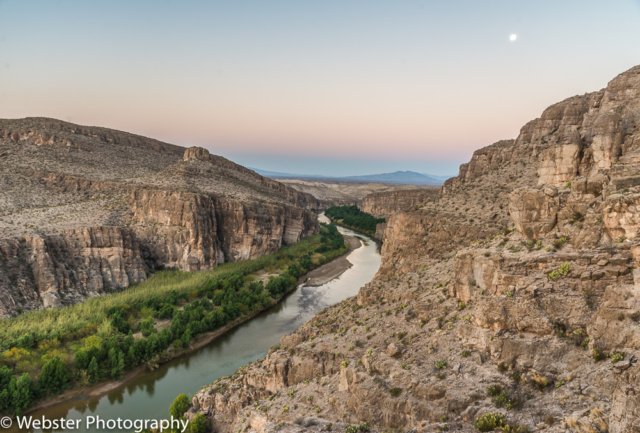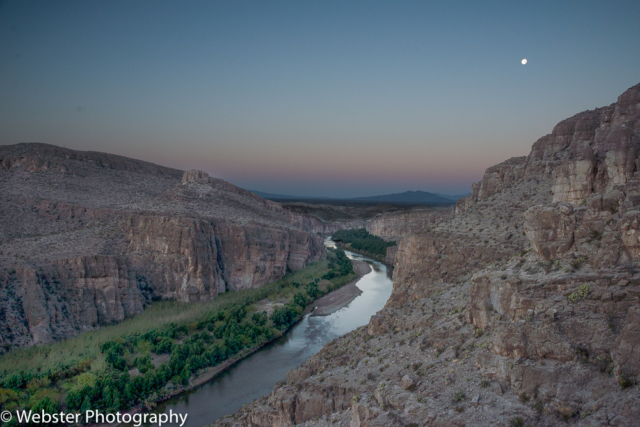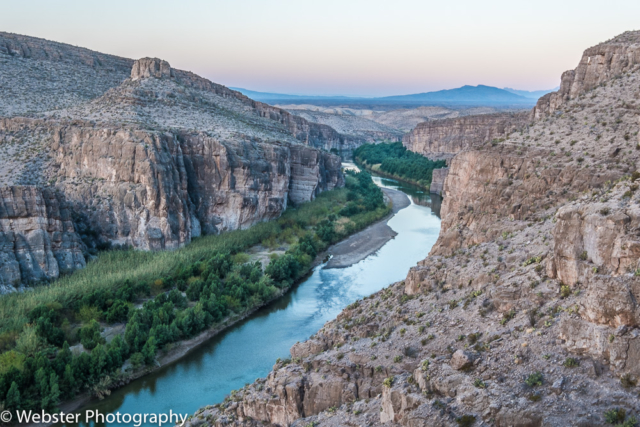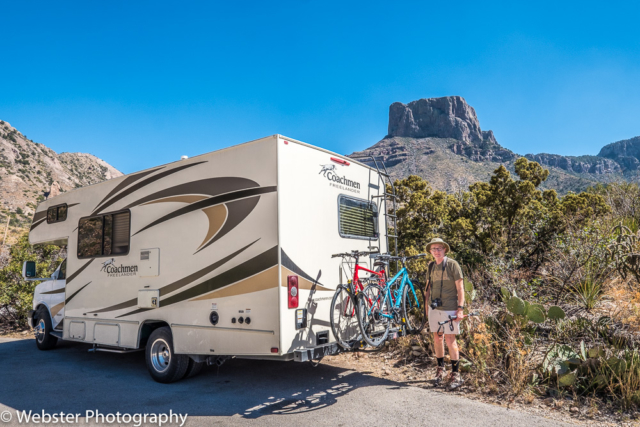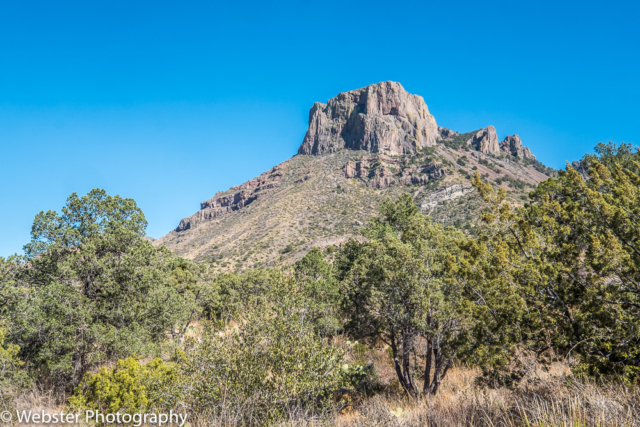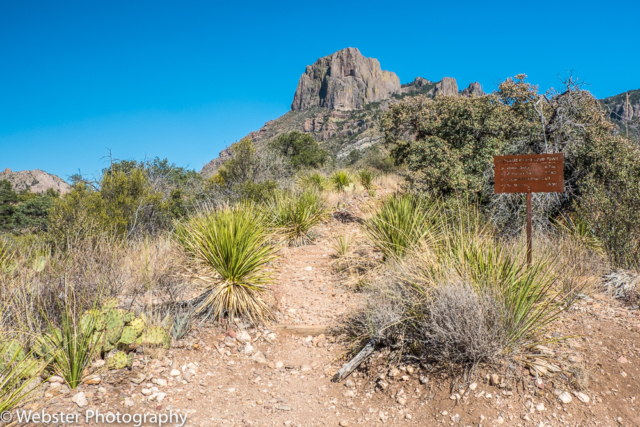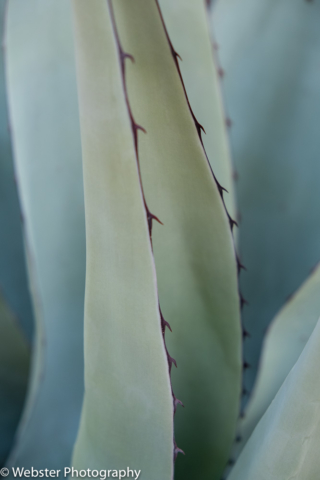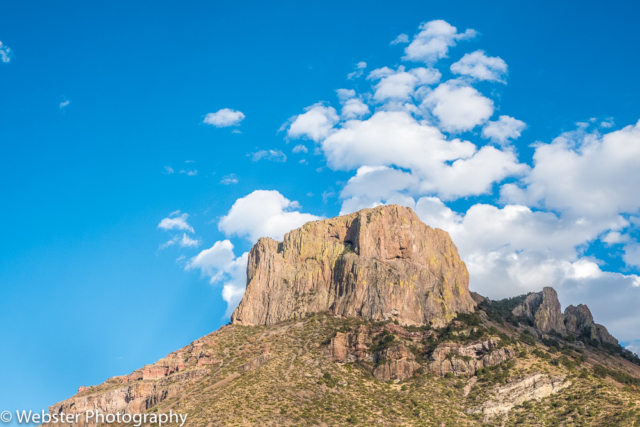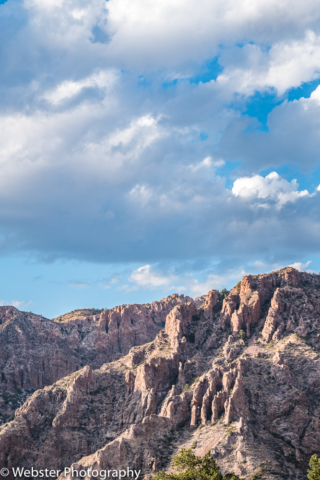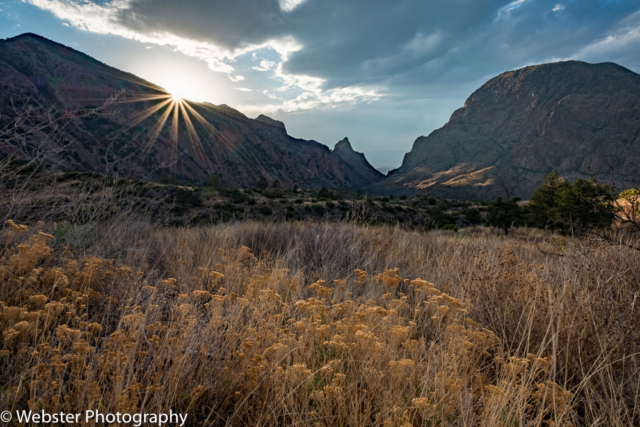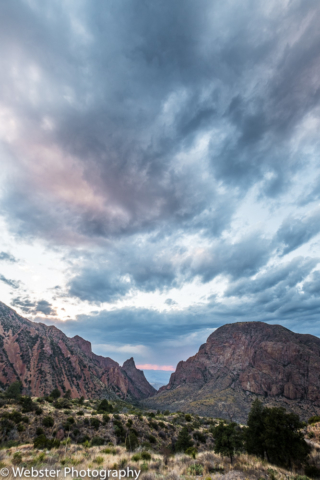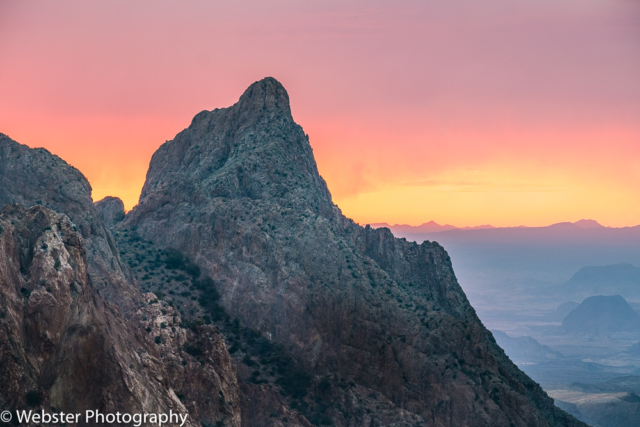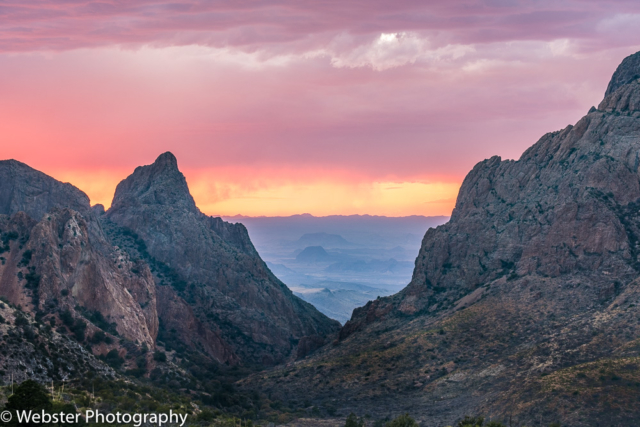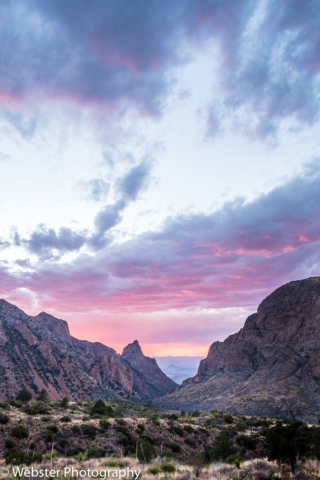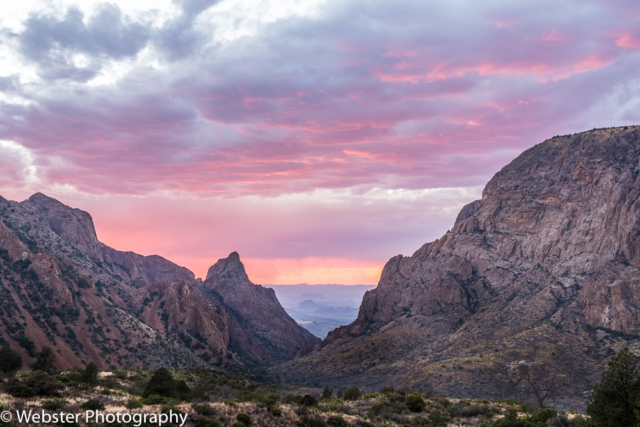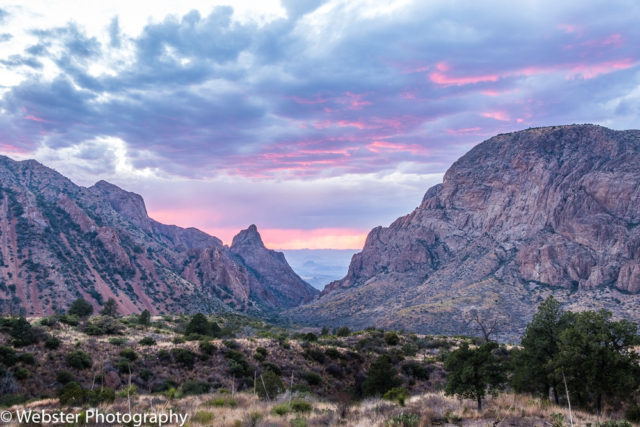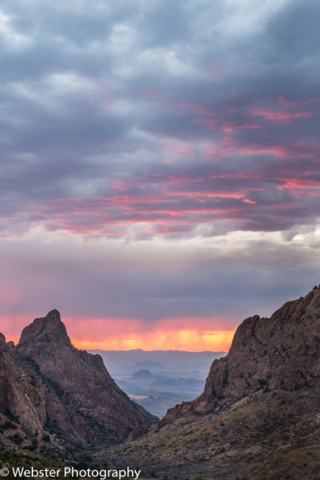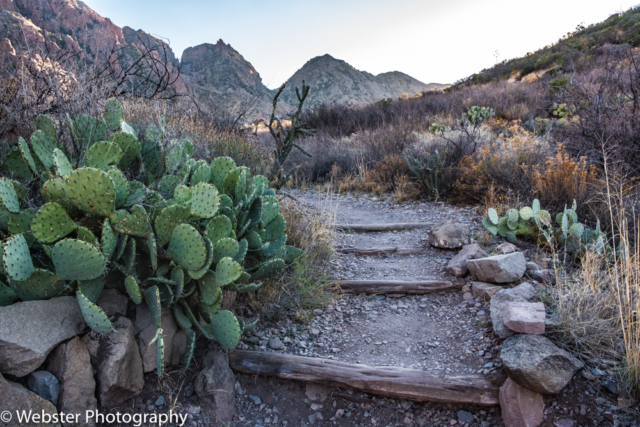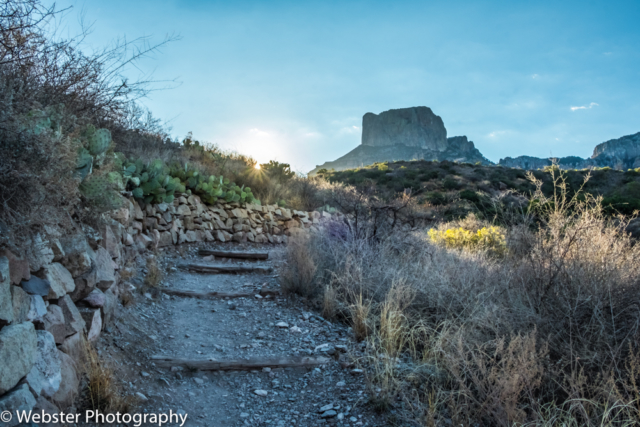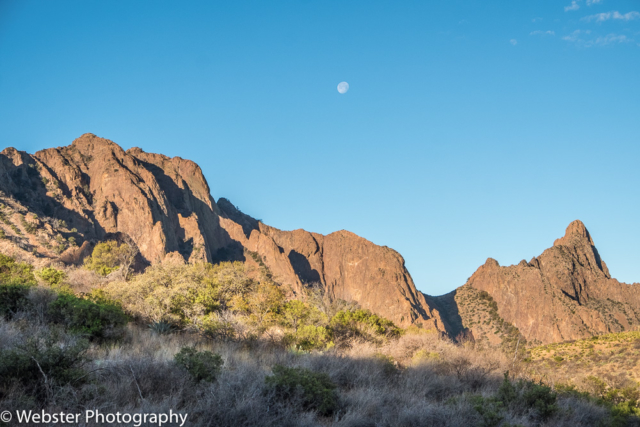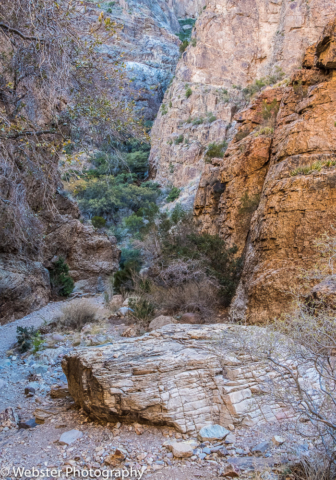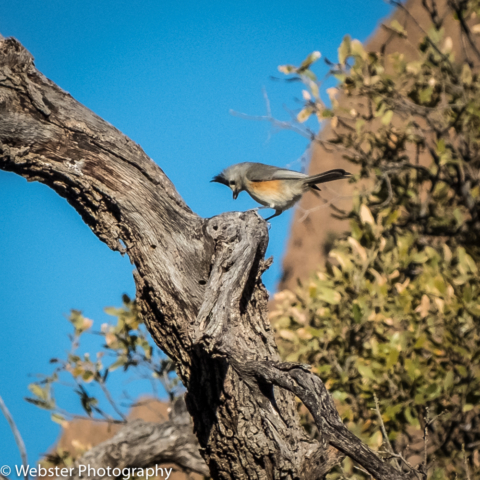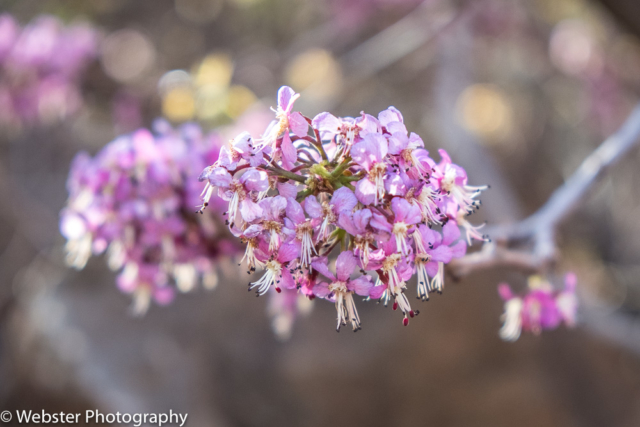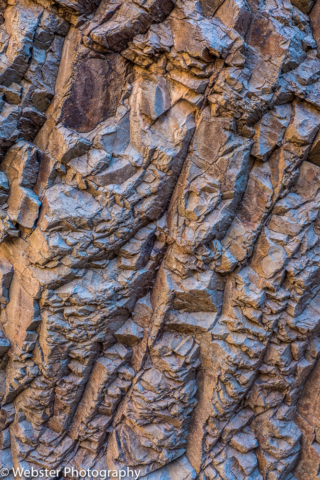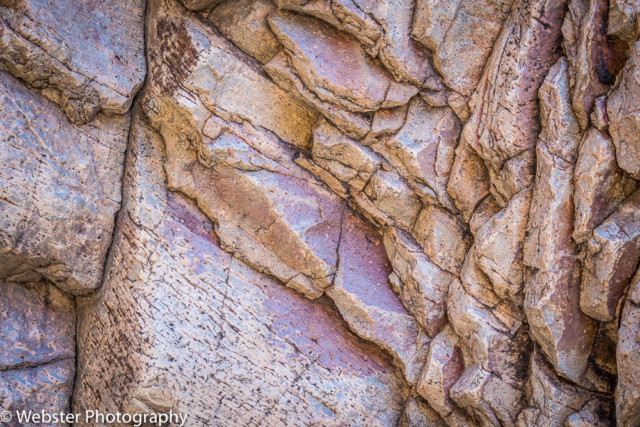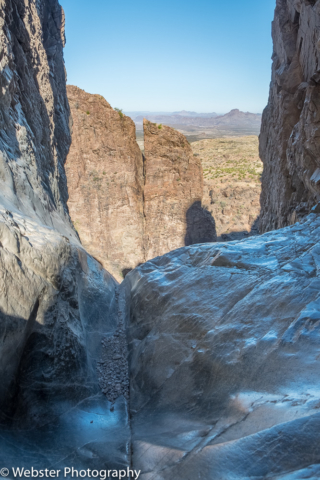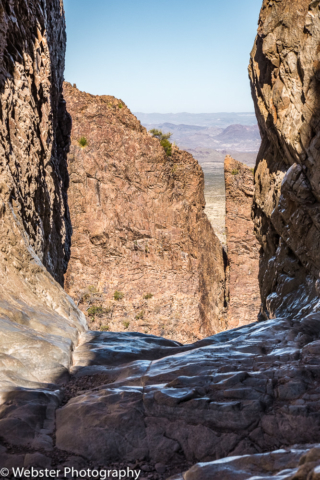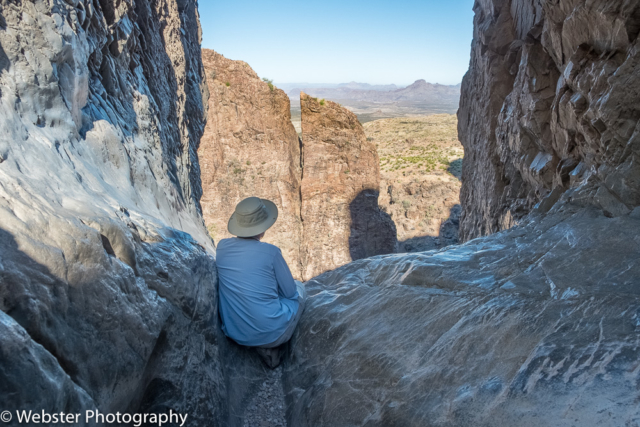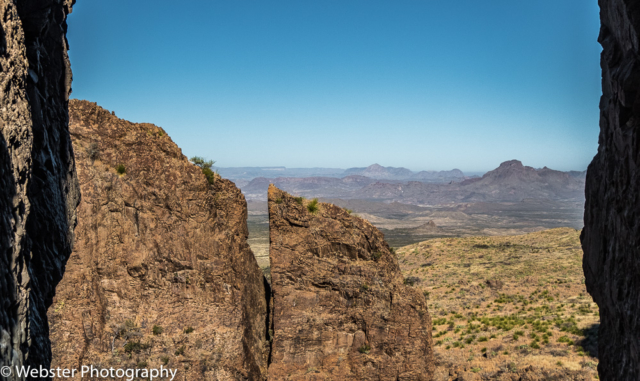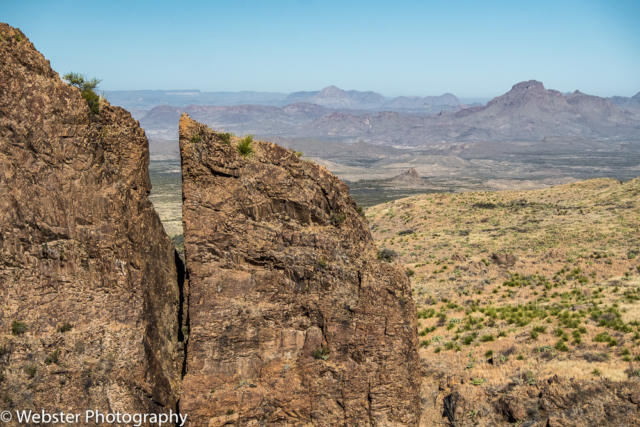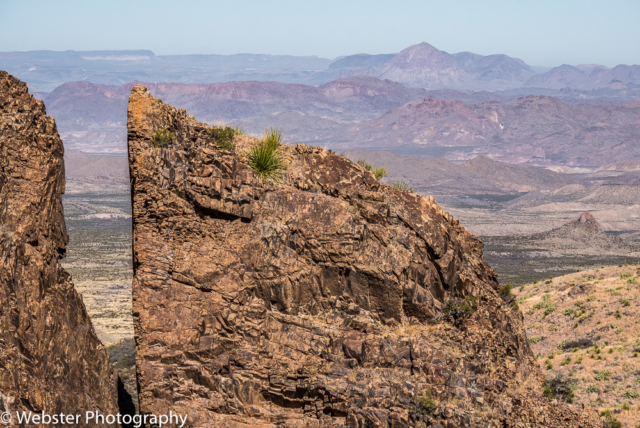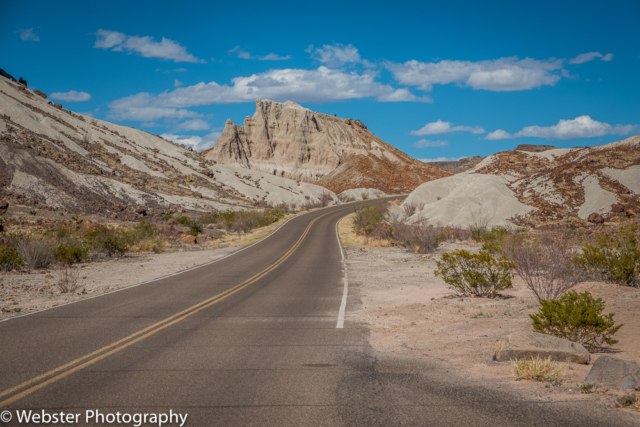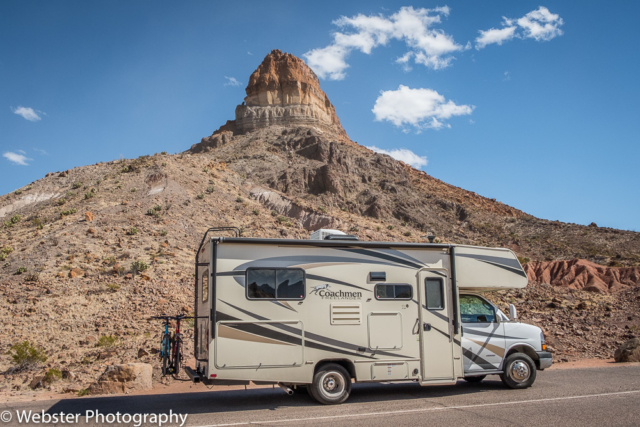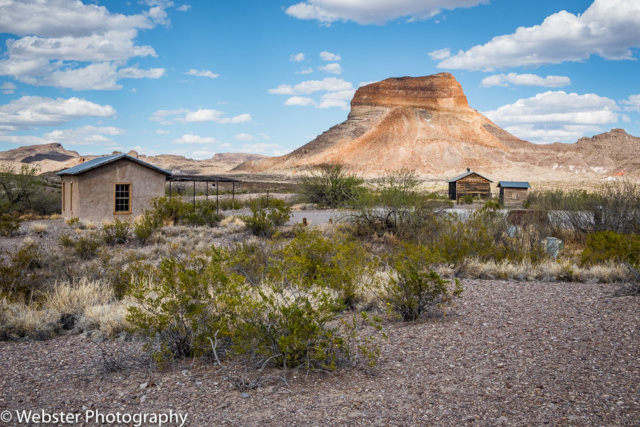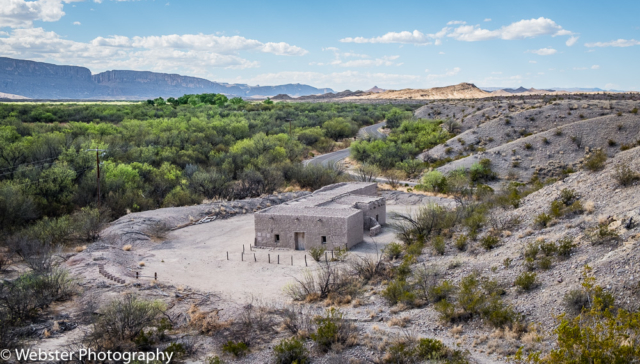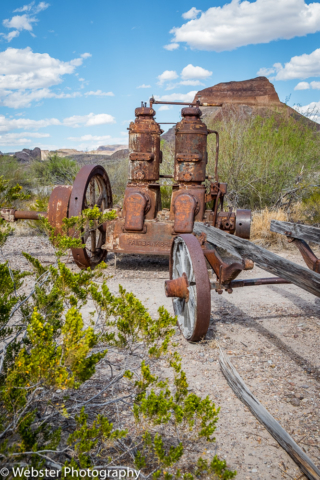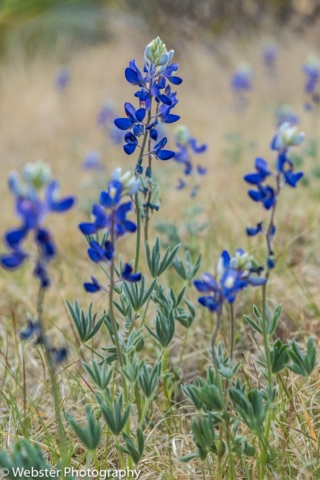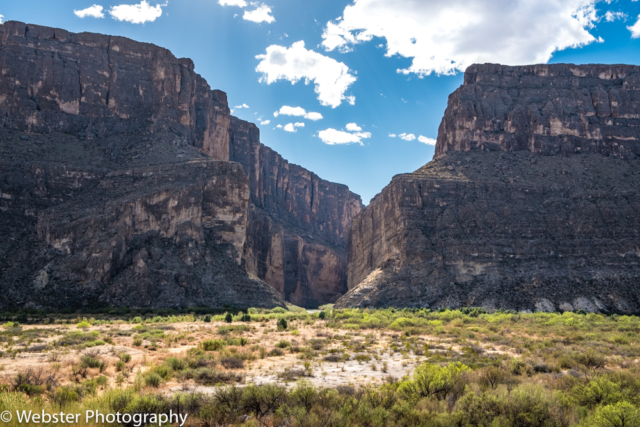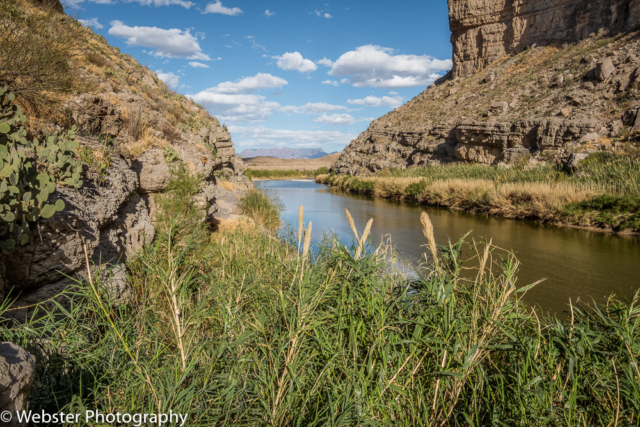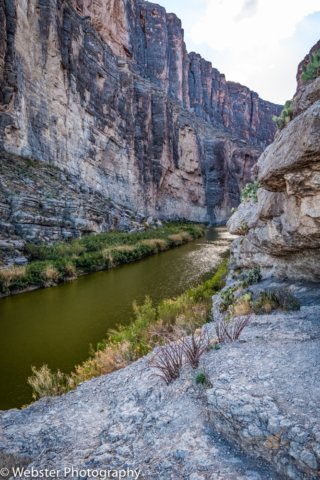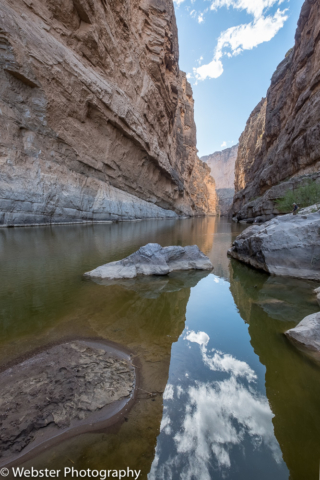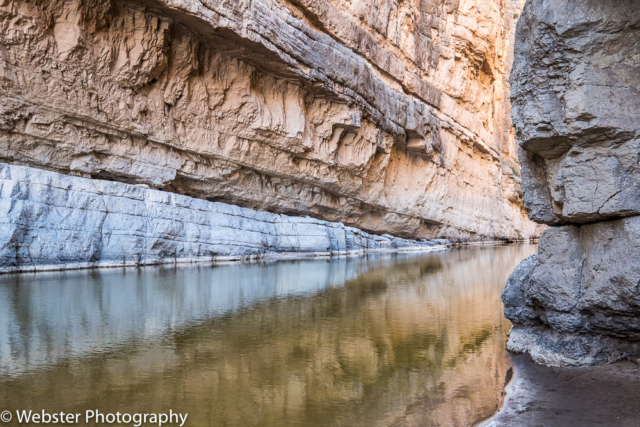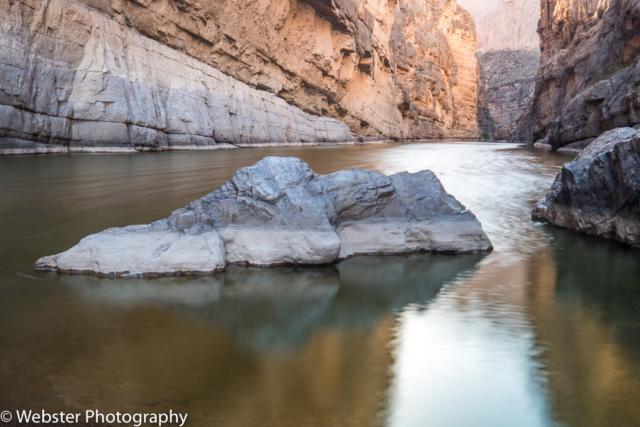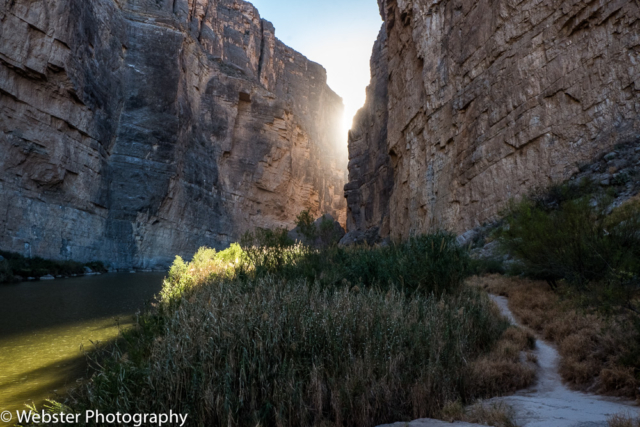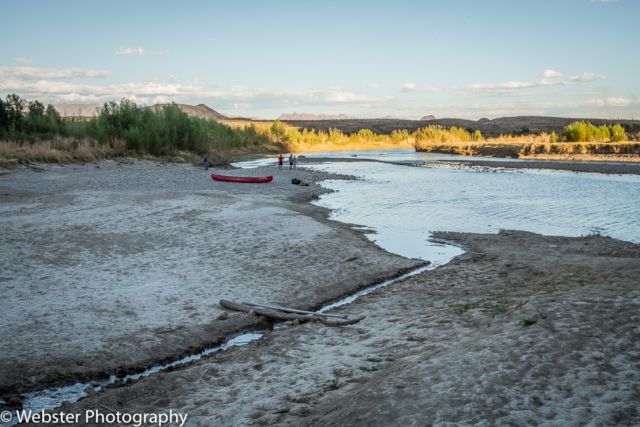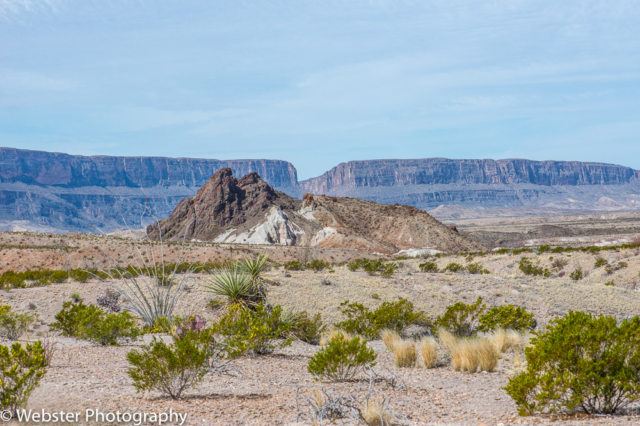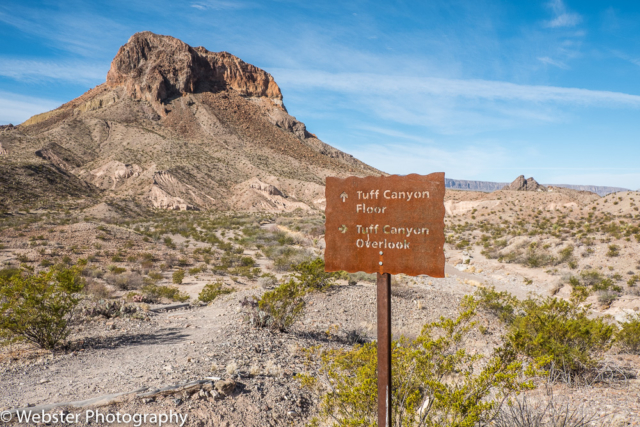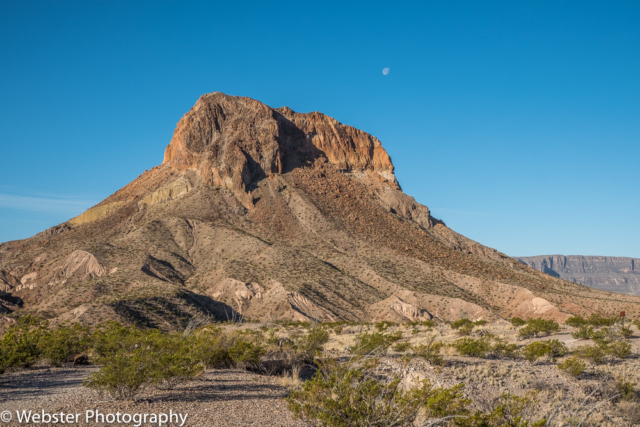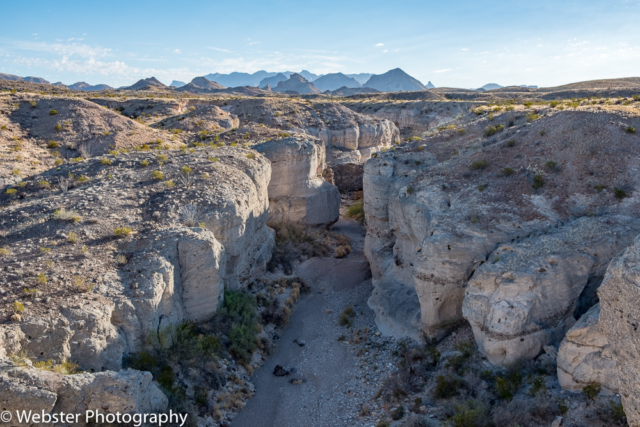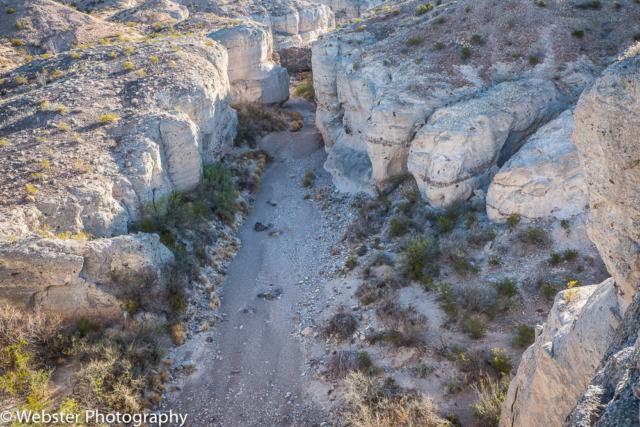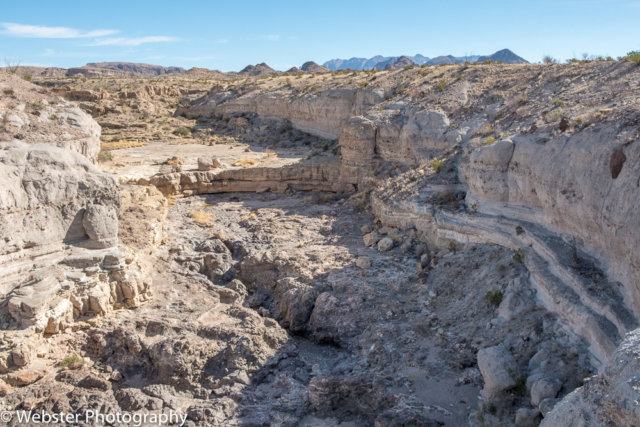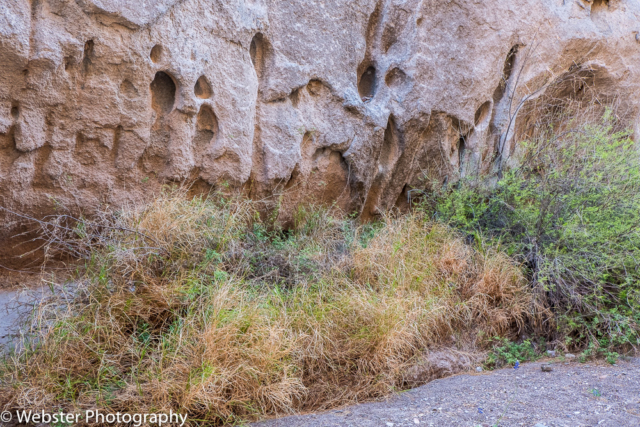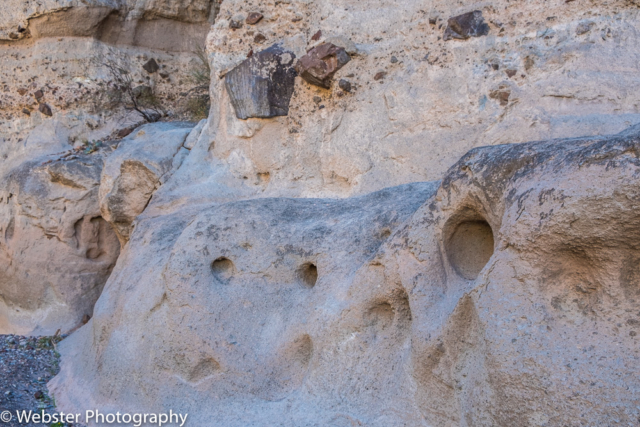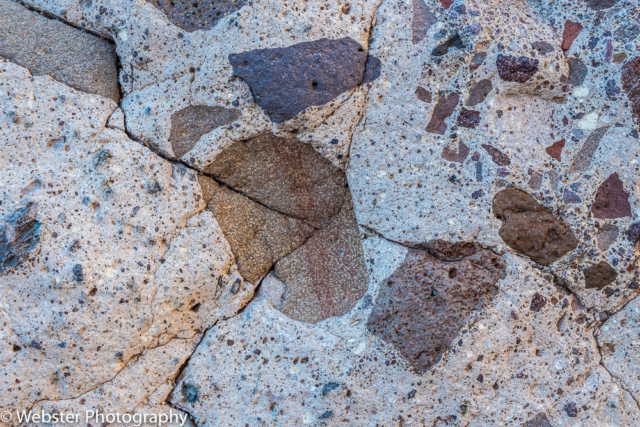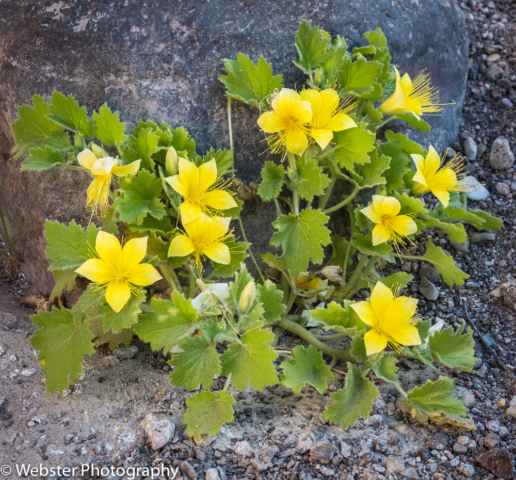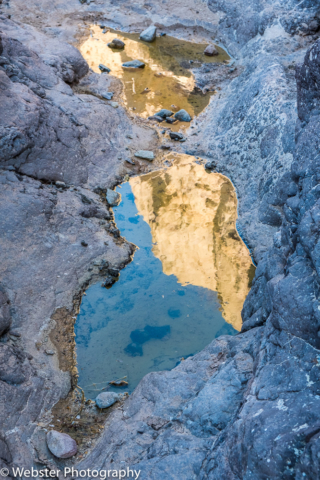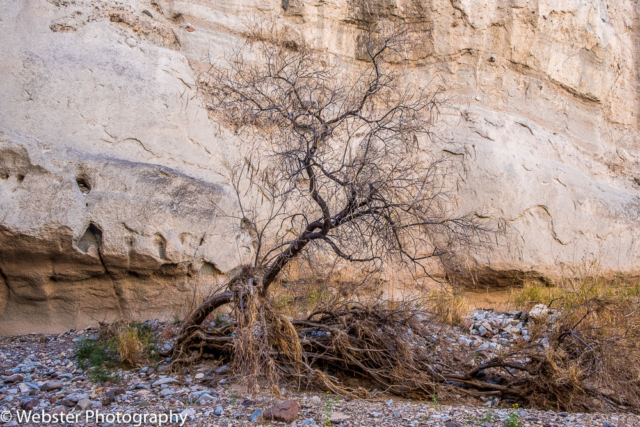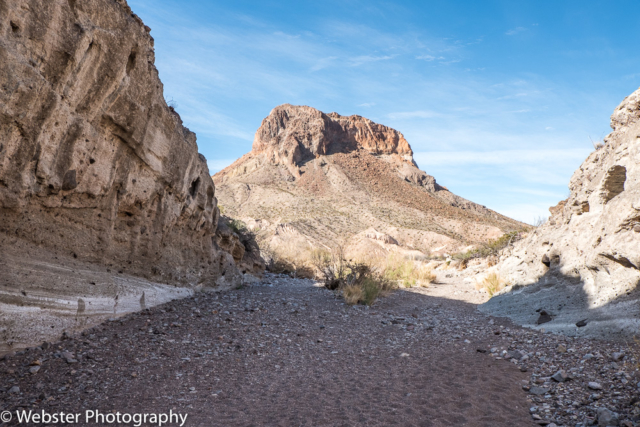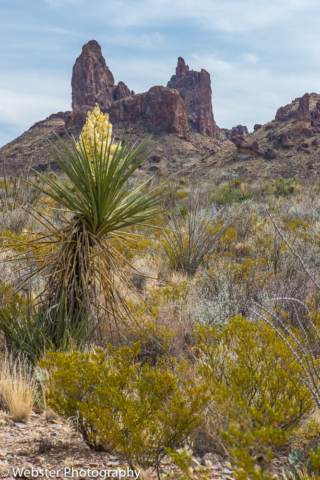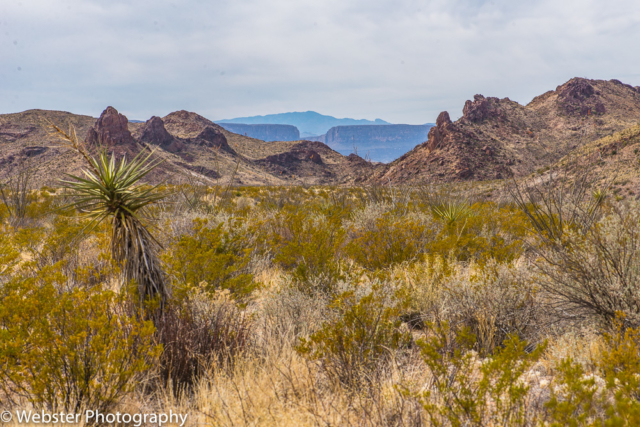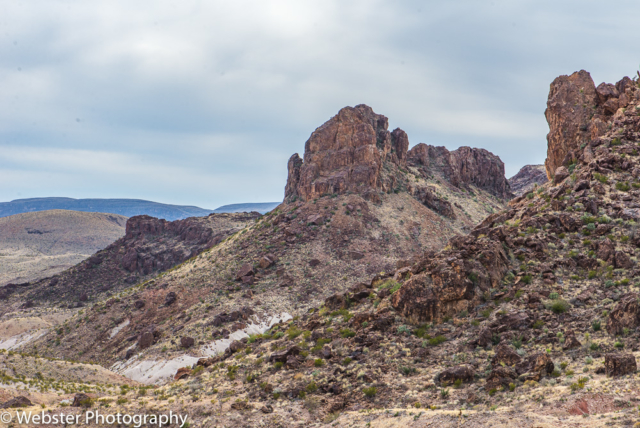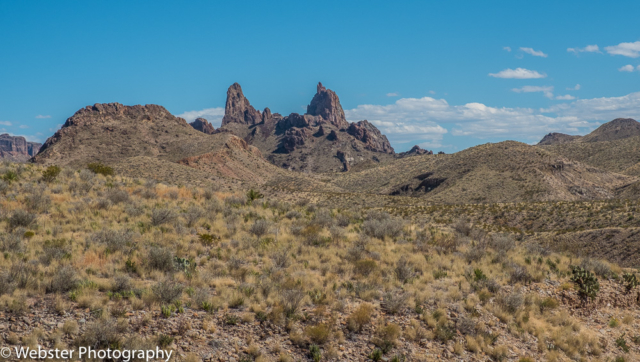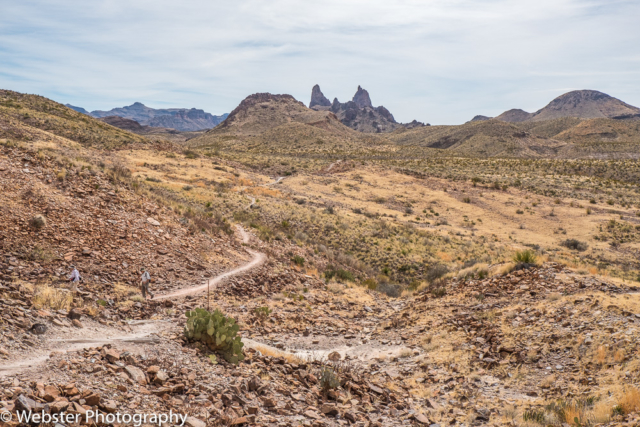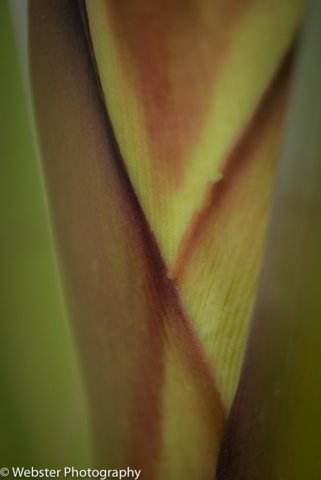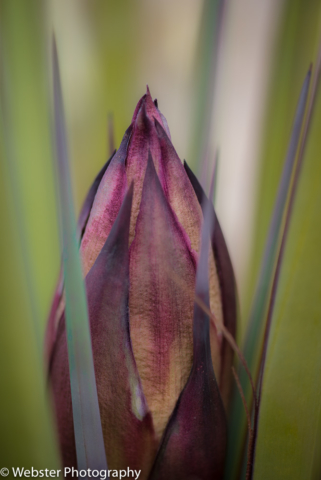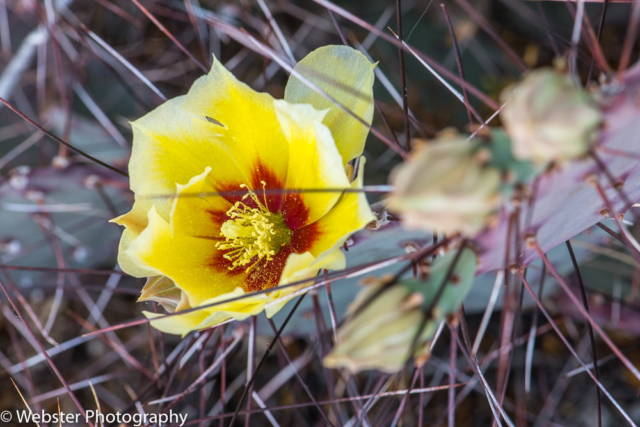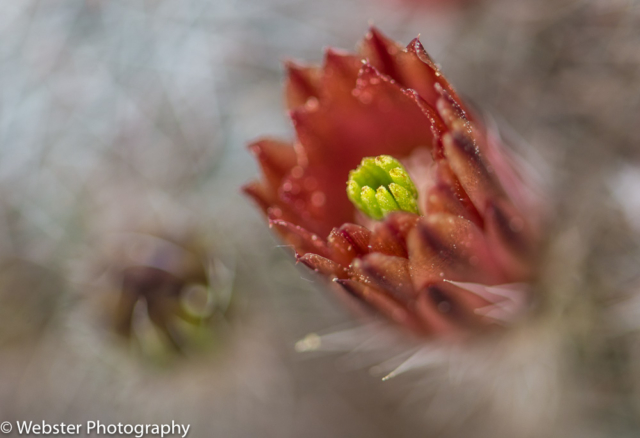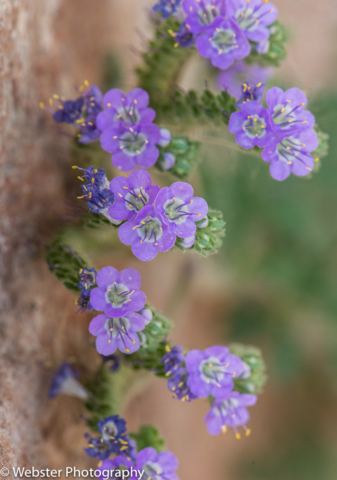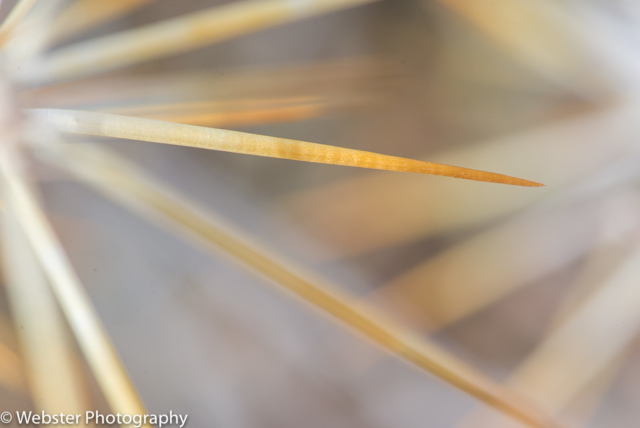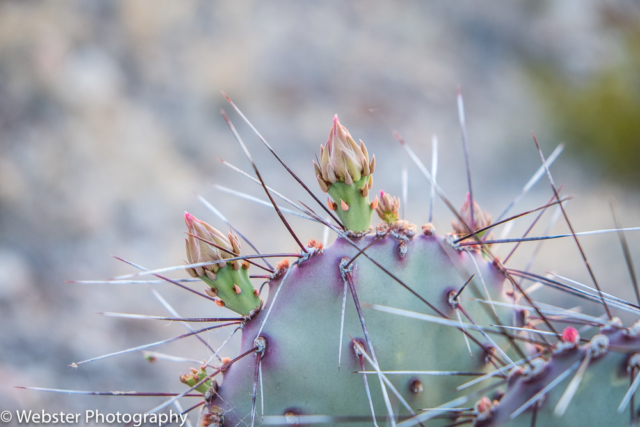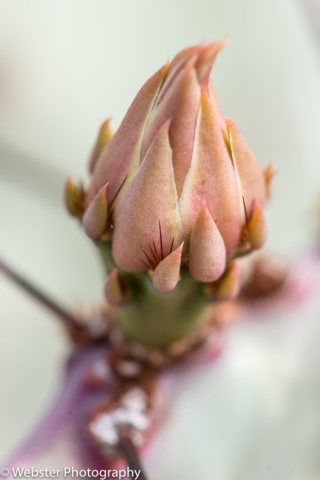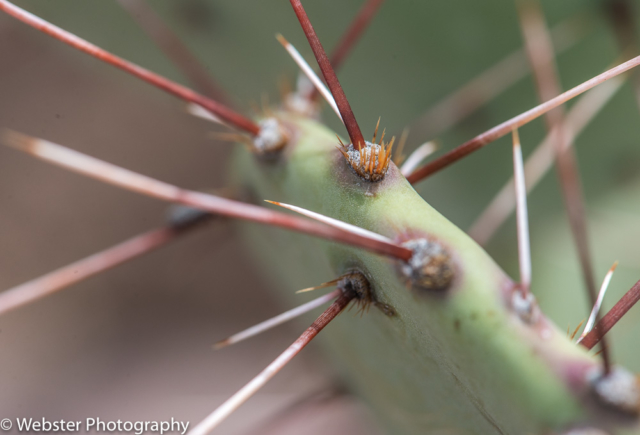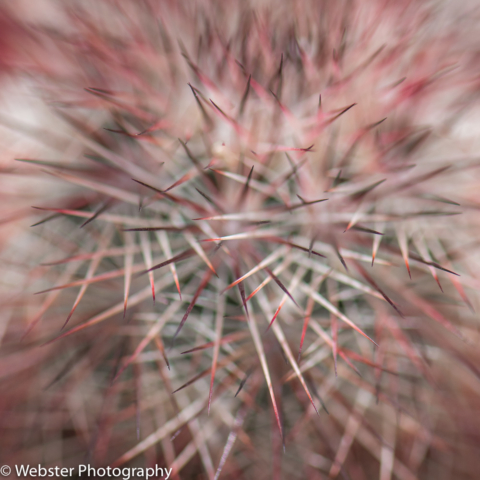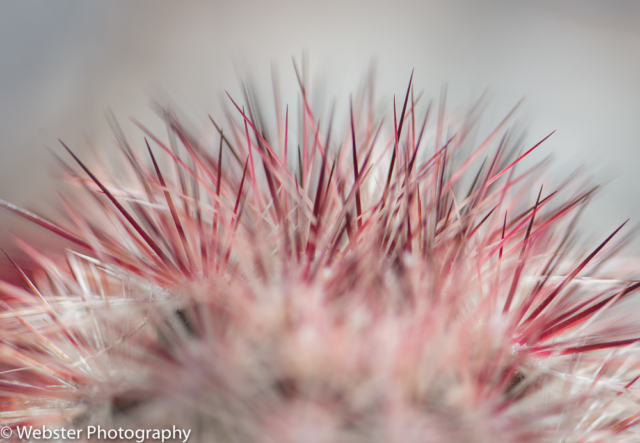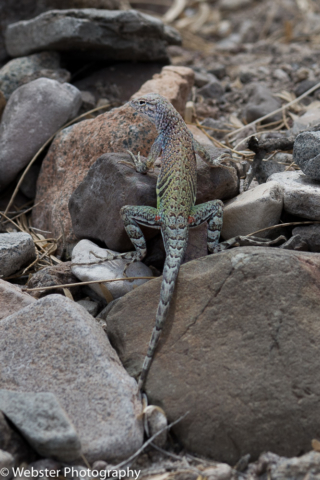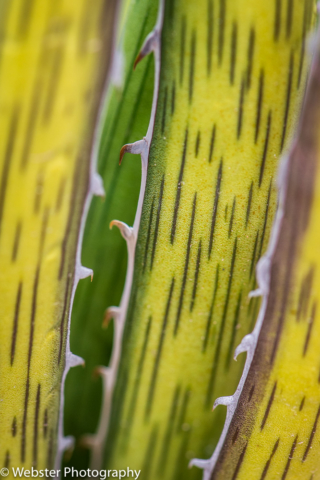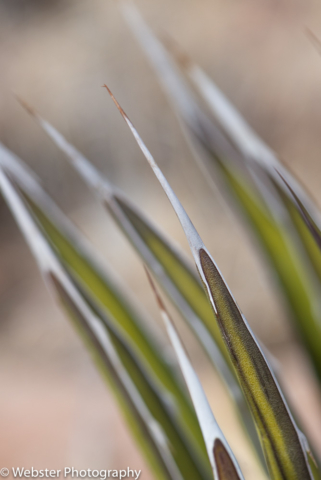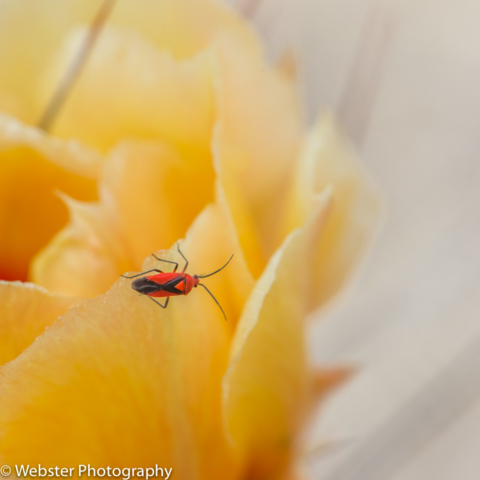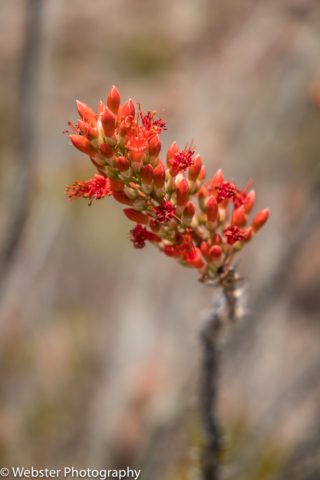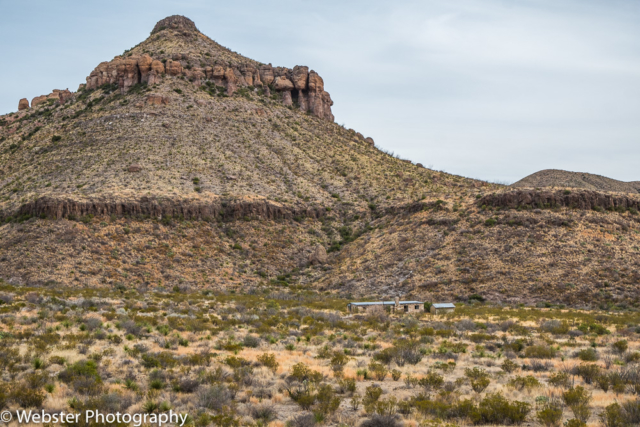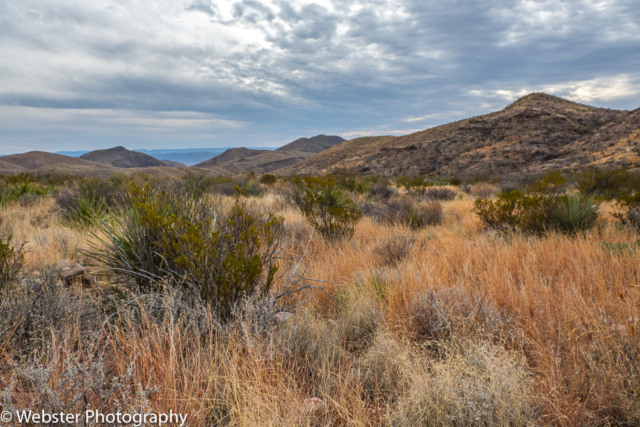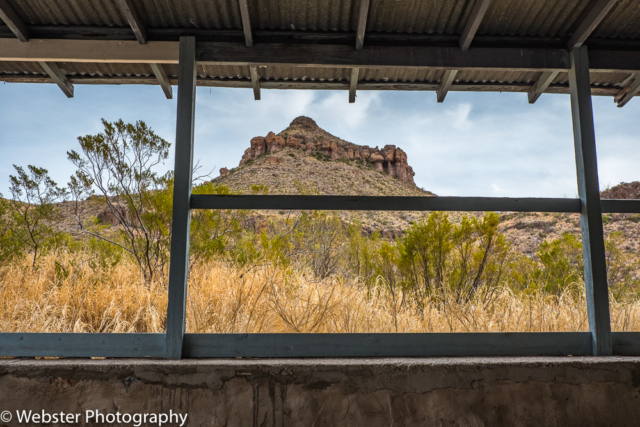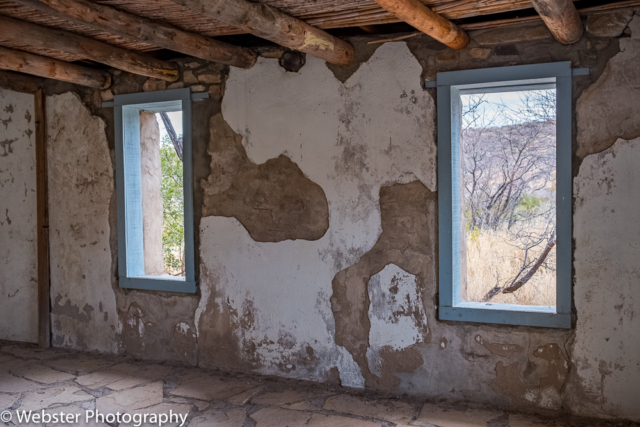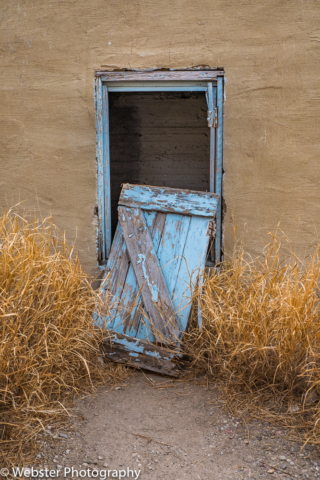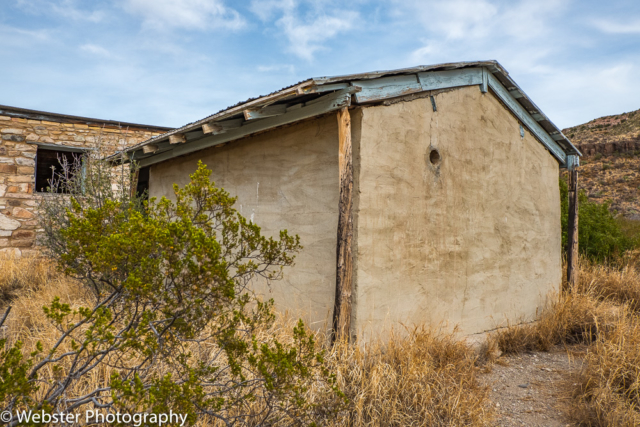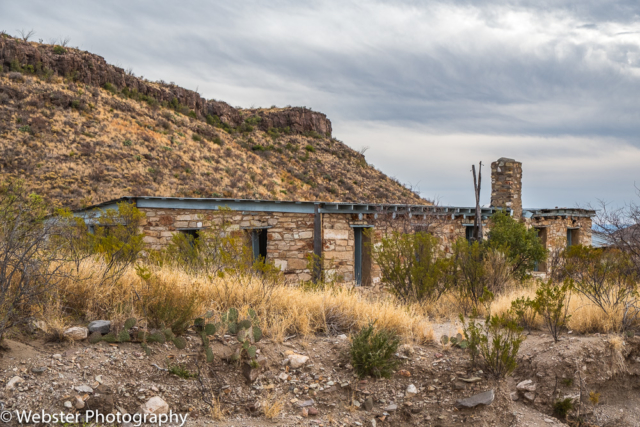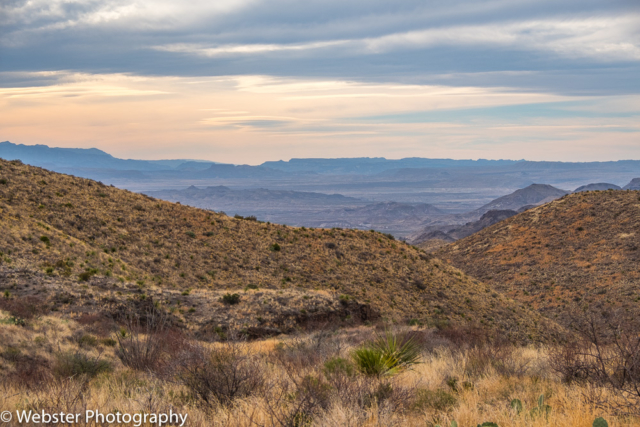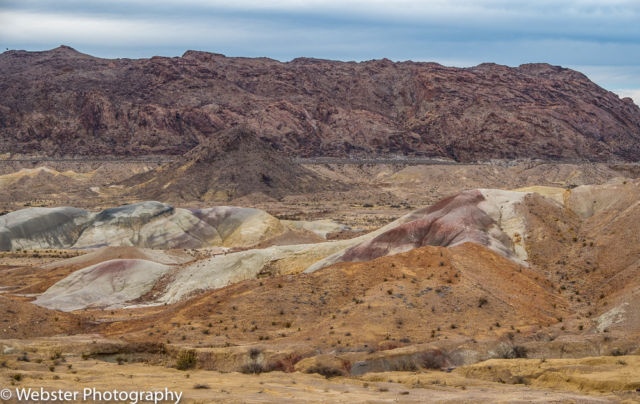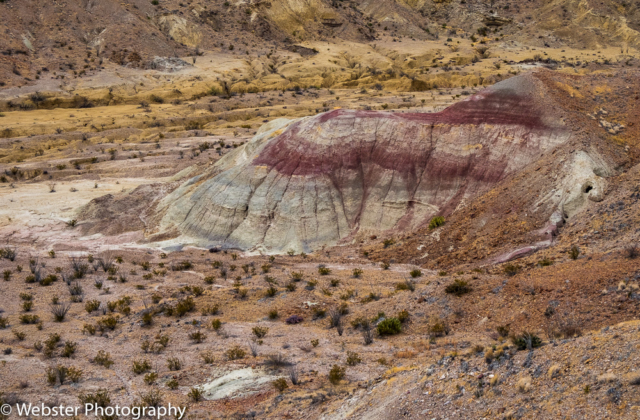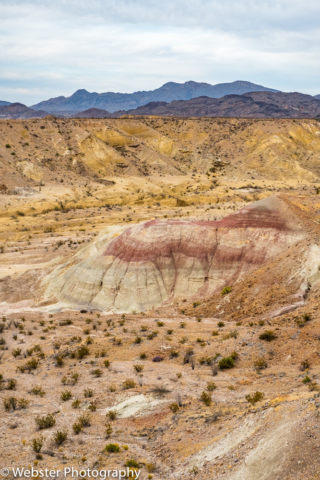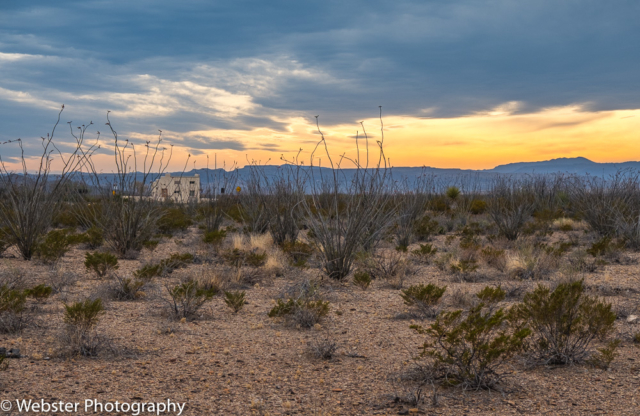Big Bend National Park is named for the prominent bend in the Rio Grande along the U.S./Mexico border. It encompasses a large and remote part of the Chihuahuan Desert. Its main attraction is backcountry recreation in the arid Chisos Mountains. Source: Wikipedia
Established: 1944
Size: 801,163 Acres
Rank in Size: 15
# Visitors in 2017: 440,276
(Visited Feb-March 2018) A visit to Big Bend National Park was the focus of our month-long RV trip where we visited a total of 11 National Park sites, including 4 major National Parks. We researched this park well in advance and made reservations at the campgrounds that accepted advance reservations. This being a remote park with little or no significant towns nearby, we knew we had to arrive with lots of our own provisions and a good strategy for getting hook-ups when we needed them for electricity, water, and tank dumping. We did pretty good for novices. We entered the park on Hwy 395 from the north end of the park. Our first stop was the Persimmon Gap Visitor Center for our passport stamps and brochures and to talk to the rangers. We went on to Panther Junction Visitor Center for more of the same and finally on to Rio Grande Village where we stayed for the first 3 nights. We stopped at several places along the road to Rio Grande Village, catching our first views of the majestic Sierra del Carmen Mountains to the east. We arrived in Rio Grande Village in time for our first sunset as viewed from the Rio Grande Nature Trail, close to our campsite.
Our first full day in Big Bend was spent hiking the Hot Springs Trail. We heard this trail was one of the best day hikes in the park with amazing views of the Rio Grande and the Sierra del Carmen Mountains as well as a chance to explore the Hot Springs Historic District near the end of the trail with its several ruins dating back to 1909 when J.O. Langford established the Boquillas Hot Springs resort. I had read about these hot springs along the river and wanted to experience this. It is one of those unique experiences we love to explore in our national parks. So, we packed our bathing suits and towels along with our cameras, lunch, and lots of water for the day and set out. Another interesting experience along this trail was seeing the little Mexican “kiosks” set up on the U.S. side of the Rio Grande with Mexicans watching from the Mexican side of the river. We were warned by the Park Rangers not to purchase anything from these “kiosks” because it was encouraging the illegal border crossings. It was interesting that they knew it was going on, yet there didn’t appear to be any real concern from a border security standpoint.
We hiked at least 6 miles round-trip on the Hot Springs Trail and were pretty beat when we got back to the campsite. Soon the sunset was calling me again, and up the Nature Trail we went again.
Day 2 in the park was spent exploring the Mexican village of Boquillas del Carmen and hiking the Boquillas Canyon Trail. We rode our bikes 4 miles from the Rio Grande Village campground to the U.S. Border Control crossing. This was another unique experience at Big Bend. After clearing through the border crossing, we paid $5 to local Mexicans to row us across the Rio Grande in a flat-bottomed row boat. The crossing here was very narrow and shallow. On the other side, there was an entire tourist enterprise…. welcoming U.S. visitors for their day trips to their village. We could have ridden mules into town, but we opted to walk. Normally, this part of my Big Bend National Park story would end here (since Boquillas del Carmen is outside of the park), but it was such an interesting experience facilitated by Big Bend National Park, that I just wanted to include it all.
Once we reached the village of Boquillas del Carmen, we walked all throughout the town, checking out the numerous kiosks selling local crafts (we were able to purchase from these since we were in Mexico), the village church, several homes, and restaurants. We also enjoyed interacting with the local people and the myriad of dogs wandering everywhere. There were 2 decent restaurants in the village, obviously catering to U.S. tourists. We had an excellent lunch of goat tacos and chicken tamales, washed down with a great margarita and a beer.
After our visit to Boquillas, we biked back to our campsite and picked up our RV so we could drive to the Boquillas Canyon Trailhead. We hiked to the end of the trail, enjoying the view of the Rio Grande from the Boquillas Canyon Overlook and then hiking right down to the water’s edge, even wading in the water and waving to the Mexicans on the other bank.
Before leaving the Rio Grande section of the park, we got up early on our last morning, strapped our tripods to our bikes and with our headlamps to show the way, we rode to the Hot Springs Trailhead and hiked up to the Rio Grande Overlook about 3/4 miles one way. We had previously scoped our spot for photographing and we were rewarded with a beautiful sunrise.
We packed up and headed for Chisos Basin. We took a short hike (1.8 miles round trip) around the Chisos Basin Trail Loop after hiking up from our campsite to the trailhead (about 3/4 miles). From the loop trail, the prominent peak, Casa Grande was always in view.
After the hike, we waited to photograph the sunset from the Windows View Trail, a very short hike from the Visitor Center. And it was a beautiful sunset!!!
The next morning, we hiked the entire Windows Trail (5 miles round-trip). We got up early in order to catch the early morning light and cooler temperatures. We enjoyed a nice hike without many other hikers and best of all… had The Windows to ourselves when we arrived. It is an amazing experience sitting in the opening of The Windows with nothing but the view in front of us and sheer rock walls below us.
Later that same afternoon, we drove the Ross Maxwell Scenic Drive towards the Castolon area in the southwestern part of the park. We made a few stops along the way, but wanted to get to the Castolon Visitor Center and Historic District before they closed for the day. We talked to the Ranger there enjoyed wandering around to see the various historic buildings of the former frontier trading post, army barracks, and farming/ranching area.
We then went on to Cottonwood Campground and secured a spot for the night before heading on to Santa Elena Canyon. This was another iconic area we hoped to capture photographically. We heard that early morning was the best time to photograph, but we decided to see what we could capture in late afternoon. We were pleased! We decided we didn’t need to return in the morning and instead could explore more on our way out of the park the next day.
Our last day in the park was spent traveling back up the Ross Maxwell Scenic Drive and spending more time hiking the areas we scoped on our way down from Chisos Basin the day before. The first hike was in the Tuff Canyon (named for the soft rock made out of volcanic ash). The early morning light made for some nice photographs. We had the canyon to ourselves.
Next stop was Mule Ears Spring Trail. I decided to carry a single camera/lens combo and a small string backpack with water and snacks for this hike. It was getting hot by the time we hit the trail and with it’s very open landscape, we were prepared for the desert heat on this 4 mile round trip hike. I used my 105mm macro lens for my single lens as I wanted to focus on capturing the close-up beauty of the desert flora. My macro lens is very versatile, allowing me to also capture some of the vista. This trail is called Mule Ears Spring Trail suggesting the presence of water…. there was some…. just a tiny stream, but enough to support some aquatic life (we spotted a frog in the middle of the desert).
Further up the road, we stopped at the Homer Wilson Ranch (aka Blue Creek Ranch) to capture a bit more of the history of the park. This ranch was one of the largest ranches in the early 20th century before Big Bend was established as a park. There was a 1 mile r/t trail leading down to the ranch buildings which were well preserved.
Our final farewell to Big Bend was at the Maverick Junction Entrance Station area. By the time we reached there, the early evening light was allowing for some great photographs, We were surprised and delighted to see yet another type of landscape here….colorful badlands.
We were sad to leave Big Bend, but were satisfied that we gave it our all! It is a beautiful park and its remoteness added to the thrill… getting there is part of the adventure!

